#deer resistant flowering shrubs for partial shade
Explore tagged Tumblr posts
Text
Japanese Sky Pencil Holly: Elevating Your Garden with Style

Title: Elevate Your Garden with Style: The Japanese Sky Pencil Holly
In the world of gardening, there are few plants as elegant and versatile as the Japanese Sky Pencil Holly. With its unique form and striking appearance, this cultivar of holly has become a favorite among gardeners looking to add a touch of sophistication to their outdoor spaces. From its slender, upright growth habit to its rich green foliage, the Japanese Sky Pencil Holly offers both beauty and functionality in equal measure.
One of the most distinctive features of the Japanese Sky Pencil Holly is its narrow, columnar shape. Unlike traditional holly bushes, which tend to have a more rounded or spreading form, the Sky Pencil grows upwards, reaching heights of up to 8 feet tall while maintaining a width of only 2 to 3 feet. This compact growth habit makes it an ideal choice for small gardens, narrow spaces, or even container plantings.
The foliage of the Japanese Sky Pencil Holly is equally noteworthy. Its glossy, dark green leaves provide year-round interest, serving as a vibrant backdrop for seasonal flowers or other garden accents. In addition to its aesthetic appeal, the foliage is also deer-resistant, making it a practical choice for gardens located in areas where deer are common.
Another advantage of the Japanese Sky Pencil Holly is its low-maintenance nature. Once established, this hardy shrub requires minimal care, thriving in a wide range of soil types and light conditions. While it prefers full sun to partial shade, it can tolerate some shade, making it adaptable to various garden settings. Regular watering and occasional pruning to maintain its shape are typically the only maintenance tasks required, making it an excellent choice for busy gardeners or those new to gardening.
In addition to its beauty and ease of care, the Japanese Sky Pencil Holly also offers practical benefits for the garden. Its dense growth habit makes it an effective privacy screen or windbreak when planted in a row, providing year-round coverage without taking up a lot of space. It can also be used as a focal point in the garden, either planted alone or in groups to create a striking vertical accent.
When designing with Japanese Sky Pencil Holly, there are endless possibilities for incorporating this versatile plant into your garden. For a contemporary look, try planting a row of Sky Pencils along a pathway or driveway to create a formal, linear border. Alternatively, use them to frame an entrance or focal point in the garden, drawing the eye upward and adding height and structure to the landscape.
For a more naturalistic approach, combine Japanese Sky Pencil Holly with other shrubs and perennials to create a mixed border or woodland garden. The upright form of the Sky Pencil provides a striking contrast to lower-growing plants, adding depth and visual interest to the planting scheme. Consider pairing it with ornamental grasses, ferns, or flowering perennials for a dynamic and textural display that evolves throughout the seasons.
In Japanese garden design, the concept of "borrowed scenery" is often employed to create a sense of depth and perspective. By strategically placing plants to frame distant views or neighboring landscapes, gardeners can enhance the beauty of their own gardens while seamlessly integrating them into the surrounding environment. The vertical form of the Japanese Sky Pencil Holly lends itself perfectly to this technique, serving as a living frame that draws the eye towards the sky or distant vistas.
In conclusion, the Japanese Sky Pencil Holly is a versatile and elegant plant that can elevate any garden with its style and grace. From its slender, upright form to its glossy green foliage, this cultivar of holly offers both beauty and functionality in equal measure. Whether used as a focal point, privacy screen, or architectural accent, the Japanese Sky Pencil Holly is sure to make a stunning addition to any landscape, providing year-round interest and enduring beauty for years to come.
0 notes
Text
Are Pinxterbloom Azaleas Poisonous? | Expert Insights
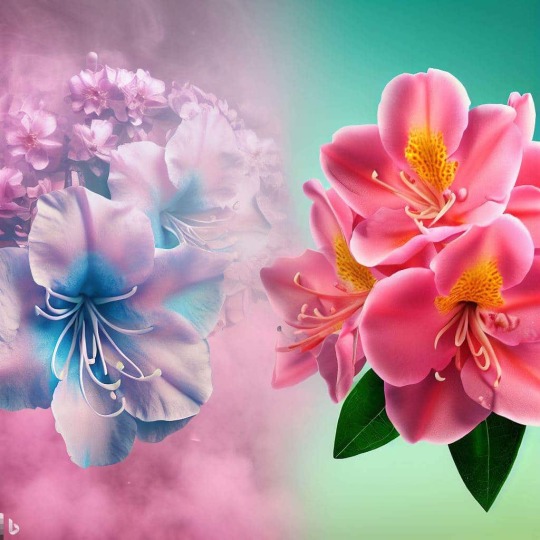
Did you know that the stunning pink pinxterbloom azalea, a pest to many plants, native to North America, holds a hidden danger? This captivating flowering shrub may be beautiful, but it can also be poisonous. Not just for humans, but for our furry friends too. Understanding the risks associated with pinxterbloom azaleas is crucial for everyone's safety, especially when using them as cut flowers. So grab a seat and get ready to explore the world of pink pinxterbloom azalea poisoning at your local garden center. Let's uncover what makes these enchanting flowers both a delight and a danger to your garden, as they attract aphids that can harm your plants.
Identification and Description of Rhododendron periclymenoides
Attribute Description Scientific Name Rhododendron periclymenoides Common Name Pinxterbloom Azalea Family Ericaceae Genus Rhododendron Height 3-5 feet Width 3-5 feet Flower Color Pink, sometimes white Flowering Season Late spring to early summer Leaf Type Evergreen Leaf Color Dark green Sun Exposure Partial shade Soil Type Moist, well-drained Native Range Eastern United States USDA Hardiness Zone 4-7 Landscape Uses Woodland gardens, shade gardens, naturalized areas Growth Habit Compact, rounded Wildlife Attracted Bees, butterflies, hummingbirds Deer Resistance Moderate Maintenance Low Common Pests/Diseases Lacebugs, leaf spots, powdery mildew Propagation Methods Seeds, cuttings Additional Information Rhododendron periclymenoides is a native azalea species in the eastern United States. It is a deciduous shrub with showy pink flowers that bloom in late spring to early summer. The flowers are sometimes white. The dark green leaves are evergreen and provide an attractive backdrop to the flowers. This azalea prefers partial shade and moist, well-drained soil. It is commonly found in woodland gardens, shade gardens, and naturalized areas. Rhododendron periclymenoides attracts bees, butterflies, and hummingbirds with its nectar-rich flowers. While it has moderate resistance Rhododendron periclymenoides, commonly known as pinxterbloom azalea, is a ciduous shrub that is popular for planting in shrub borders and landscape design. This shrub is characterized by clusters of pink or white flowers that bloom in late spring. The elliptical dark green leaves provide attractive foliage, making it a popular choice for shrub borders and landscape design. Additionally, it is resistant to aphids and has sturdy stems and buds. There are several key characteristics to look out for when planting and watering the plant. It has a root ball system with new growth appearing in the spring. It thrives in moist soil and can often be found in outdoor landscapes. Be mindful of any pest issues that may arise. When planting pinxterbloom azaleas, it is important to provide light shade and consistently damp but well-drained soil moisture. Regular pruning promotes healthy growth and helps maintain their shape. Additionally, watering should be done carefully to prevent aphids. These flowers are also great for cut flower arrangements.
Toxicity of Pinxterbloom Azalea

The pinxterbloom azalea plant, also known as Rhododendron periclymenoides, contains toxic grayanotoxins in all parts of the plant, including the stems, leaves, and flowers. The plant is best suited for shady zones and should be handled with care to avoid any potential harm. Ingesting any part of the pinxterbloom azalea flower can lead to various symptoms. Common signs of toxicity include nausea, vomiting, abdominal pain, and dizziness. These effects can range from mild discomfort to more severe reactions. It is important to provide shade, water, and proper conditions for the growth of this plant. In some cases, individuals may experience low blood pressure or an irregular heartbeat after consuming pinxterbloom azalea flowers. In extreme shade conditions, it is even possible to fall into a coma due to the toxicity of this plant. Water is also important for the growth and health of the pinxterbloom azalea. Given the potential risks of poisonous flowers, it is crucial to know the toxic nature of pinxterbloom azaleas. Whether you have children or pets, it is important to ensure they do not come into contact with this shade-loving flower or consume any part of it. To summarize: - All parts of the pinxterbloom azalea contain grayanotoxins. - Ingesting water contaminated with these toxins can cause symptoms like nausea, vomiting, abdominal pain, and dizziness. These symptoms can worsen under certain conditions such as high light exposure or lack of shade. - Severe cases of low blood pressure, irregular heartbeat, or even coma can occur due to water conditions, shade, or light. - Take precautions to prevent accidental ingestion of water by children and pets, especially in conditions where there is shade. Additionally, ensure that any objects or plants that can be cut are kept out of reach to avoid any accidents.
Safety Precautions for Handling and Planting Pinxterbloom Azalea

It is essential to take certain precautions to ensure your safety while handling and planting pinxterbloom azaleas in various soil conditions. Here are some key points to keep in mind regarding the water and cut requirements. - Wear gloves: Always wear gloves when handling pinxterbloom azaleas to avoid direct contact with their sap or leaves. This will help protect your skin from any potential irritation or allergic reactions. - Keep children and pets away: It's crucial to keep children and pets away from these plants to prevent accidental ingestion. Pinxterbloom azaleas can be toxic if consumed, so it's best to create a safe distance between curious little ones and the plant. - Choose a secure location: If you plan on planting pinxterbloom azaleas in your garden, select a location that is inaccessible to animals or children who might be tempted to explore or nibble on the plant. This will minimize the risk of accidental poisoning. - Proper disposal: When pruning or uprooting parts of the pinxterbloom azalea, it is essential to dispose of them properly. Accidental poisoning can occur if someone comes into contact with discarded plant material, especially if they mistake it for something else edible. Ensure proper disposal methods are followed. By following these safety precautions, you can enjoy the beauty of pinxterbloom azaleas without compromising the quality of water, soil, or the well-being of others around you. Remember: wear gloves when handling soil, keep children and pets away from water, choose a secure location for plaing soil, and dispose of pruned parts properly!
Recommended Native Plants as Alternatives to Pinxterbloom Azalea
If you're wondering whether pinxterbloom azaleas are poisonous to soil or water, it might be a good idea to explore some native alternatives that offer similar beauty without the potential toxicity. By planting native plants like mountain laurel or flame azalea instead, you can create a safe and vibrant garden environment while supporting local ecosystems and wildlife habitats. Native Plant Similar Beauty Potential Toxicity Support for Local Ecosystems and Wildlife Habitats Mountain Laurel Yes No Yes Flame Azalea Yes No Yes Here are a few reasons why considering alternatives for water and soil is a great idea. - Safety: Unlike pinxterbloom azaleas, which may pose a risk due to their toxicity, native plants such as mountain laurel and flame azalea are not known to be toxic. This means you can enjoy their stunning blooms without worrying about any harmful effects. - Beauty: Mountain laurel and flame azalea are both renowned for their captivating flowers. These plants offer an array of colors and patterns that rival the allure of pinxterbloom azaleas. By choosing these alternatives, you won't have to compromise on aesthetics. - Ecosystem Support: Native plants play a crucial role in supporting local ecosystems. They provide food and shelter for various insects, birds, and other wildlife species. By opting for mountain laurel or flame azalea, you contribute to maintaining the delicate balance of your surroundings. Researching suitable alternatives for your garden is essential to ensure the soil remains healthy and the water is not contaminated. By exploring options like mountain laurel or flame azalea, you can maintain a beautiful garden while avoiding potential risks associated with toxic plants.
Understanding the Risks and Benefits of Pinxterbloom Azaleas

Pinxterbloom azaleas, with their toxic properties, can enhance the aesthetic value of any landscape. By evaluating the risks and benefits, you can make informed decisions about incorporating these plants into your garden, considering factors such as soil and water. Being aware of the potential dangers associated with pinxterbloom azaleas in water and soil allows for responsible gardening practices. This knowledge empowers you to take necessary precautions and create a safe environment for both humans and pets. Balancing safety concerns with personal preferences ensures a harmonious garden setting. While pinxterbloom azaleas may pose a risk due to their toxicity to water and soil, they can be strategically placed away from high-traffic areas or where children and pets roam freely. This way, you can enjoy their beautiful bloom time without compromising safety.
USDA Native Status and Wetland Indicator Status of Pinxterbloom Azaleas
Pinxterbloom azaleas are native to various regions in North America, including the eastern United States. These beautiful flowering shrubs have gained recognition for their vibrant blooms and ability to thrive in different habitats, such as soil and water. The United States Department of Agriculture (USDA) lists pinxterbloom azaleas as native plants, highlighting their ecological significance in soil and water. The wetland indicator status of pinxterbloom azaleas varies depending on specific water and soil conditions within their range. This variability reflects the adaptability of these plants to different environmental conditions. Understanding their native water and soil status aids in conservation efforts and promotes biodiversity by encouraging the preservation of natural habitats where they naturally occur. By recognizing pinxterbloom azaleas as native plants, the USDA acknowledges their importance in supporting local ecosystems by providing nectar and pollen for pollinators such as bees and butterflies. This contributes to the overall health of the surrounding flora and fauna, as well as the soil and water. Conservation efforts that focus on preserving pinxterbloom azalea habitats help maintain healthy ecosystems by protecting the soil and water. These native plants ensure a diverse range of plant species, benefiting future generations with their beauty and ecological services.
Conclusion: Understanding the Poisonous Nature of Pinxterbloom Azaleas
In conclusion, it is important to understand the poisonous nature of Pinxterbloom Azaleas (Rhododendron periclymenoides) before handling or planting them in soil. These beautiful flowering shrubs may add visual appeal to your garden, but they can pose risks if not handled with caution, especially when it comes to water. Pinxterbloom Azaleas contain toxic compounds called grayanotoxins, which can be harmful if ingested by humans or animals. Symptoms of poisoning include nausea, vomiting, dizziness, and in severe cases, cardiac disturbances. Therefore, it is crucial to take safety precautions when dealing with these plants to avoid any harm to the water, soil, humans, or animals. To ensure your safety and that of others around you, always wear gloves when handling Pinxterbloom Azaleas to prevent direct contact with the sap. It is also advisable to avoid consuming any part of the plant or allowing pets and livestock access to it, as it may contaminate the water and soil. If you are concerned about the potential risks associated with Pinxterbloom Azaleas in your garden's soil and water, consider exploring alternative native plant options. There are numerous native plants available that offer similar beauty without posing a toxicity threat to the soil and water. In summary, understanding the poisonous nature of Pinxterbloom Azaleas and their potential risks to personal safety is crucial when making informed decisions about landscaping choices. By taking necessary precautions and exploring alternative options if desired, you can create a beautiful garden while minimizing potential risks to water.
FAQs
Are Pinxterbloom Azaleas safe to have around pets? Pinxterbloom Azaleas are not safe for pets as the grayanotoxins in these plants can be harmful if ingested. It is crucial to keep pets away from Pinxterbloom Azaleas to prevent water poisoning incidents. Can I eat the flowers of Pinxterbloom Azaleas? No, it is not recommended to consume any part of the Pinxterbloom Azalea plant, including its flowers. The grayanotoxins in these plants can cause nausea, vomiting, and other adverse effects if ingested. It is important to avoid ingesting water from the Pinxterbloom Azalea plant as it can be harmful to your health. Do all azalea varieties contain toxins? Not all azalea varieties contain toxins in their water. However, Pinxterbloom Azaleas (Rhododendron periclymenoides) do contain toxic compounds called grayanotoxins in their water. It's important to identify the specific variety before assuming its toxicity level related to water. What are some alternative native plants that I can consider instead of Pinxterbloom Azaleas? If you're looking for alternative native water plants with similar beauty, you may consider options such as Virginia Sweetspire (Itea Virginia), Carolina Jessamine (Gelsemium sempervirens), or Swamp Rose (Rosa palustris). These water plants offer aesthetic appeal without the associated water toxicity risks. Can I use Pinxterbloom Azaleas in flower arrangements or bouquets indoors? It is generally advised not to include Pinxterbloom Azaleas in indoor flower arrangements or bouquets due to their toxic nature. If accidentally ingested or handled without gloves, they can pose health risks related to water. Read the full article
0 notes
Text
This Story Behind Deer Resistant Flowering Shrubs Will Haunt You Forever! | Deer Resistant Flowering Shrubs
Problems with deer?The Penn State Cooperative Extension has provided this account of deer aggressive plants. Note: There is no agreement that deer will not eat these plants, but they usually dont.A to CAgeratum (Ageratum houstonianum)Barrenwort (Epimedium sp.)Basil (Ocimum basilicum)Basket-of-Gold (Aurinia saxatilis)Bears Breeches (Acanthus mollis)Blue Fescue (Festuca ovina var. glauca)Blue Flax (Linum perenne)Blue Salvia (Salvia farinacea)Bugbane (Cimicifuga racemosa)Bugleweed (Ajuga sp.)
California Poppy (Eschscholzia californica)Canna (Canna hybrids)Catmint (Nepeta catarina)Chives (Allium schoenoprasum)Christmas Bracken (Polystichum acrostichoides)Cinquefoil (Potentilla sp.)Common Thrift (Armeria maritima)Cosmos (Cosmos bipinnatus)Crown Imperial (Fritillaria imperialis)
D to FDaffodil (Narcissus sp.)Dahlia (Dahlia sp.)Dead Nettle (Lamium maculatum)Dill (Anethum graveolens)Edging Lobelia (Lobelia erinus)Dusty Miller (Senecio cineraria)Evening Primrose (Oenothera sp.)Feather Reed Grass (Calamagrostis x acutiflora Karl Foerster)Feverfew (Chrysanthemum parthenium)Flowering Tobacco (Nicotiana alata)Foamflower (Tiarella cordifolia)Forget-Me-Not (Myosotis scorpioides)Fountain Grass (Pennisetum alopecuroides)Four-OClocks (Mirabilis jalapa)Foxglove (Digitalis sp.)
G to IGarden Phlox (Phlox paniculata)Garlic Chives (Allium tuberosum)Gerbera (Gerbera jamesonii)Ginger (Asarum sp.)Globe Thistle (Echinops sp.)Glory Lily (Gloriosa superba)Goldenrod (Solidago sp.)Hay-scentd Bracken (Dennstaedtia punctiloba)Heath (Erica sp.)Heather (Calluna sp.)Heliotrope (Heliotropium arborescens)Hellebore (Helleborus sp.)Hen and Chickens (Sempervivum sp. (spiny ones))Holly Bracken (Cyrtomium falicatum)Hyacinth (Hyacinthus orientalis)Icelandic Poppy (Papaver nudicaule)Iris (Iris sp.)
J to LJack-in-the-Pulpit (Arisaema triphyllum)Japanese Spurge (Pachysandra sp.)Joe-Pye Weed (Eupatorium purpureum)Ladys Mantle (Alchemilla vulgaris)Lambs Ears (Stachys byzantina)Larkspur (Consolida ambigua)Lavender (Lavandula sp.)Lavender Cotton (Santolina chamaecyparissus)Lily-of-the-Valley (Convallaria majalis)Lilyturf (Liriope sp.)Lungwort (Pulmonaria sp.)
M to OMaiden Grass (Miscanthus sinensis)Maximillian Sunflower (Helianthus Maximilliani)
This Story Behind Deer Resistant Flowering Shrubs Will Haunt You Forever! | Deer Resistant Flowering Shrubs – deer resistant flowering shrubs | Allowed for you to our weblog, with this occasion I will show you about keyword. And after this, this can be a initial photograph:
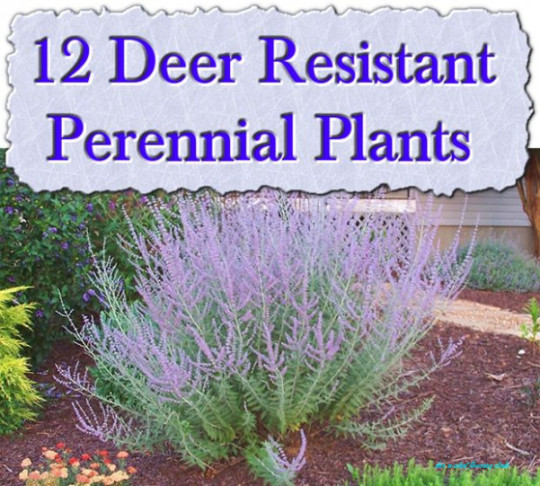
17 Deer Resistant Perennial Plants | Jardinería, Jardines, Centros .. | deer resistant flowering shrubs
Why don’t you consider impression previously mentioned? is actually that awesome???. if you’re more dedicated and so, I’l m show you a few image all over again underneath:
So, if you wish to get all of these awesome shots related to (This Story Behind Deer Resistant Flowering Shrubs Will Haunt You Forever! | Deer Resistant Flowering Shrubs), click save icon to store the pics to your laptop. These are all set for download, if you appreciate and wish to obtain it, simply click save badge in the article, and it’ll be directly downloaded to your laptop computer.} Finally if you like to find unique and latest image related with (This Story Behind Deer Resistant Flowering Shrubs Will Haunt You Forever! | Deer Resistant Flowering Shrubs), please follow us on google plus or book mark this website, we try our best to present you daily up grade with fresh and new pictures. We do hope you like staying here. For many up-dates and latest news about (This Story Behind Deer Resistant Flowering Shrubs Will Haunt You Forever! | Deer Resistant Flowering Shrubs) graphics, please kindly follow us on tweets, path, Instagram and google plus, or you mark this page on bookmark section, We attempt to give you up grade regularly with fresh and new images, enjoy your browsing, and find the ideal for you.
Thanks for visiting our website, articleabove (This Story Behind Deer Resistant Flowering Shrubs Will Haunt You Forever! | Deer Resistant Flowering Shrubs) published . At this time we are pleased to declare we have discovered an extremelyinteresting topicto be reviewed, that is (This Story Behind Deer Resistant Flowering Shrubs Will Haunt You Forever! | Deer Resistant Flowering Shrubs) Most people attempting to find info about(This Story Behind Deer Resistant Flowering Shrubs Will Haunt You Forever! | Deer Resistant Flowering Shrubs) and of course one of these is you, is not it?
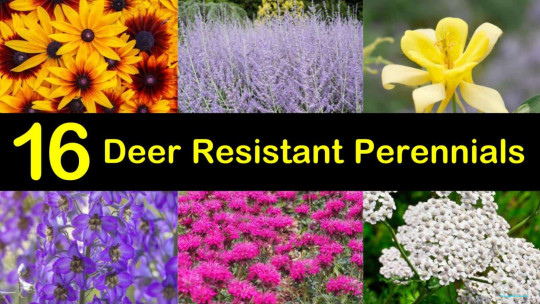
17 Deer Resistant Perennials that Won’t Be on the Wildlife Menu – deer resistant flowering shrubs | deer resistant flowering shrubs
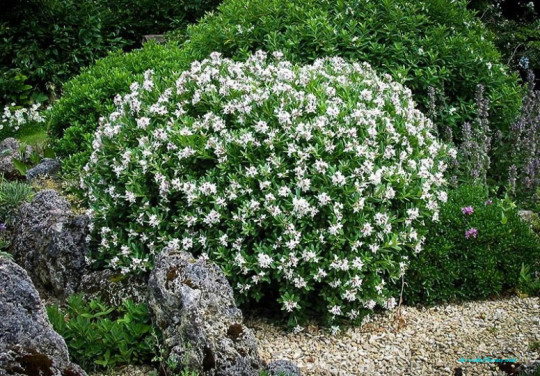
Top 17 Deer Resistant Flowering Shrubs – Deer Repellent – deer resistant flowering shrubs | deer resistant flowering shrubs
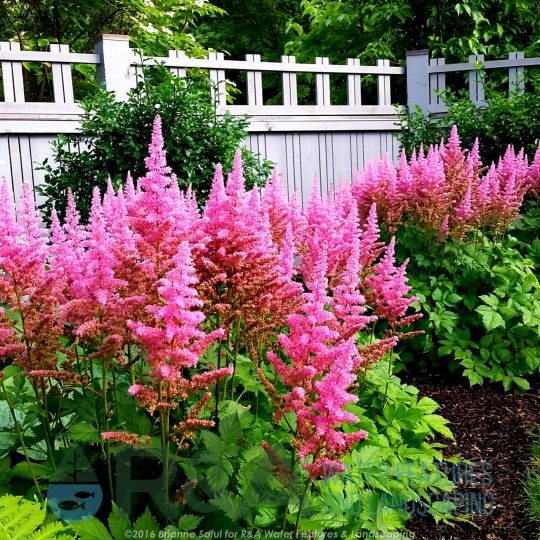
Top 17 Deer Resistant Plants for Your Kalamazoo Landscape – R&A .. | deer resistant flowering shrubs
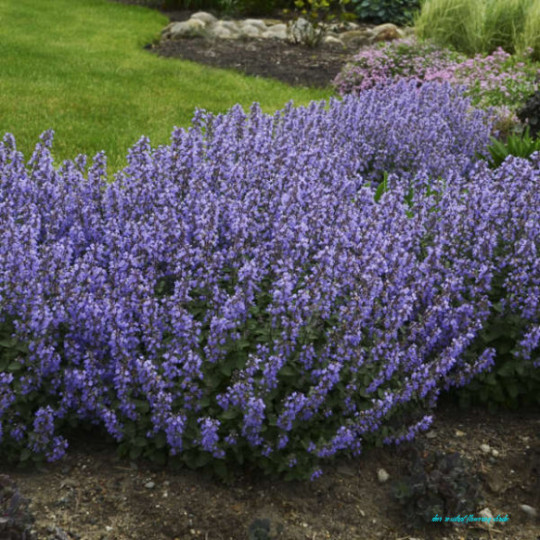
Photo Essay | Deer and Rabbit Resistant Perennials | Perennial .. | deer resistant flowering shrubs
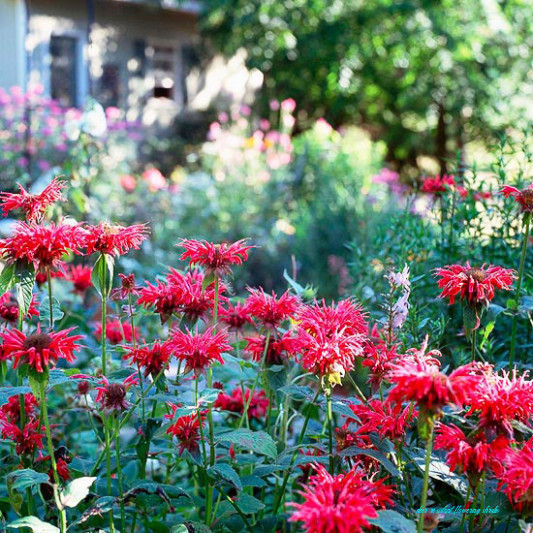
Top Deer-Resistant Plants for Your Region | Better Homes & Gardens – deer resistant flowering shrubs | deer resistant flowering shrubs
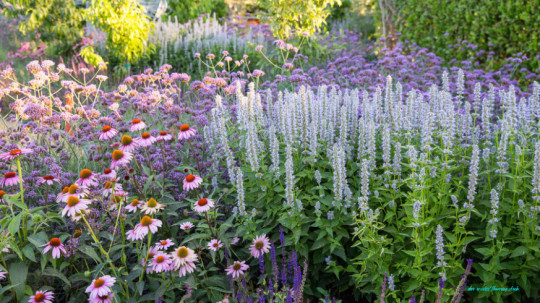
Top Critter- and Deer-Resistant Plants – Sunset Magazine – deer resistant flowering shrubs | deer resistant flowering shrubs
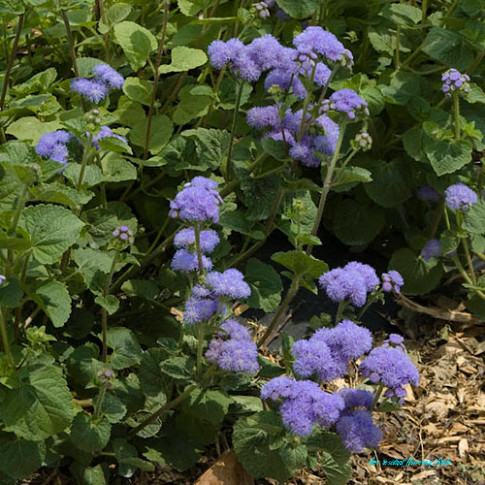
Landscape Plants Rated by Deer Resistance (Rutgers NJAES) – deer resistant flowering shrubs | deer resistant flowering shrubs
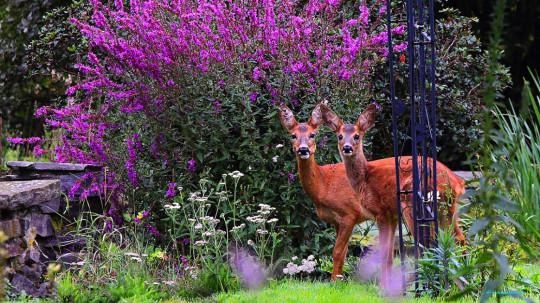
17 Beautiful Deer Resistant Shrubs – Grow Beautifully – deer resistant flowering shrubs | deer resistant flowering shrubs
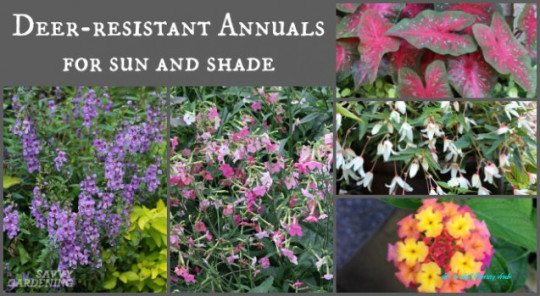
Deer-Resistant Annuals: Colorful Choices for Sun and Shade – deer resistant flowering shrubs | deer resistant flowering shrubs
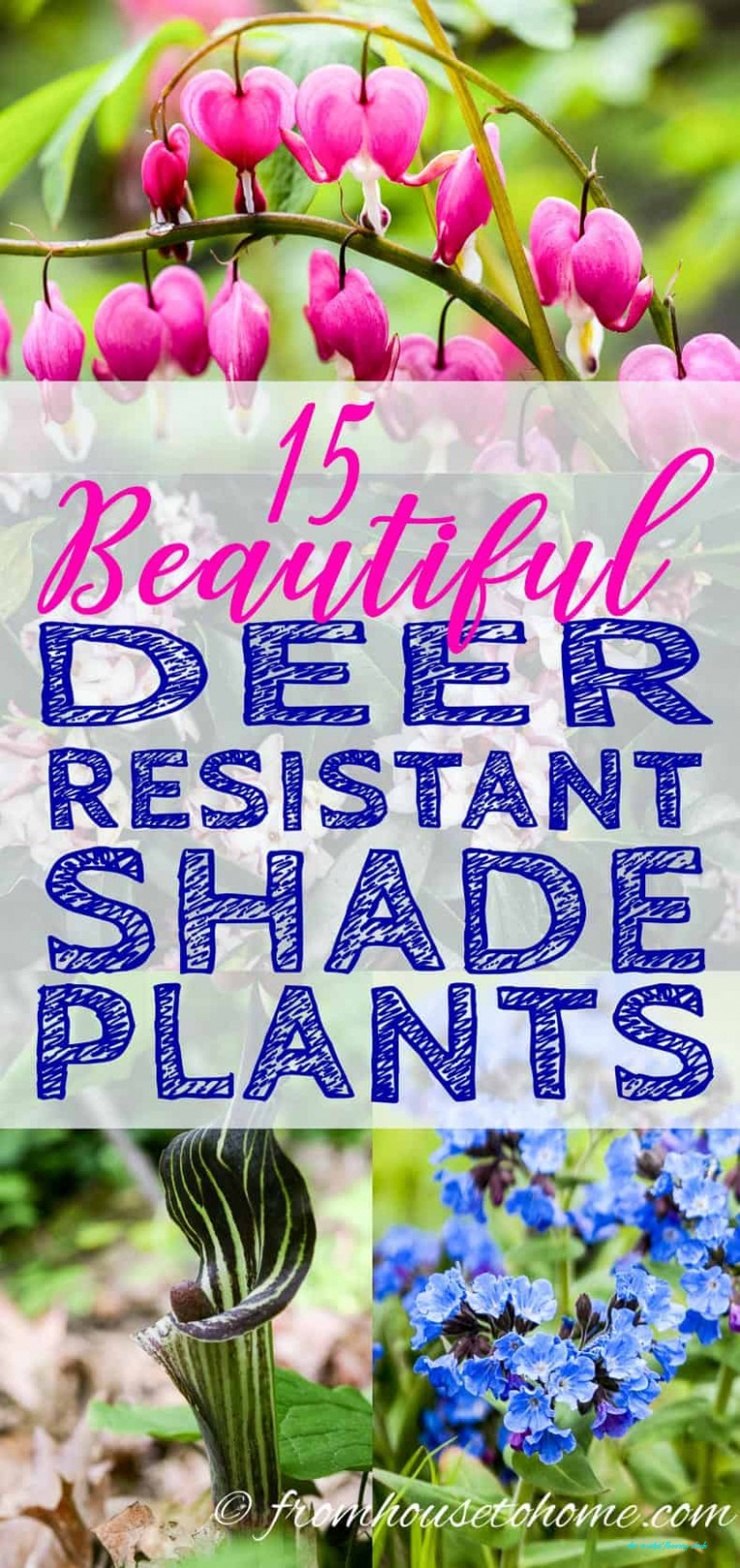
17 Beautiful Deer Resistant Shade Plants To Grow In Your Garden .. | deer resistant flowering shrubs
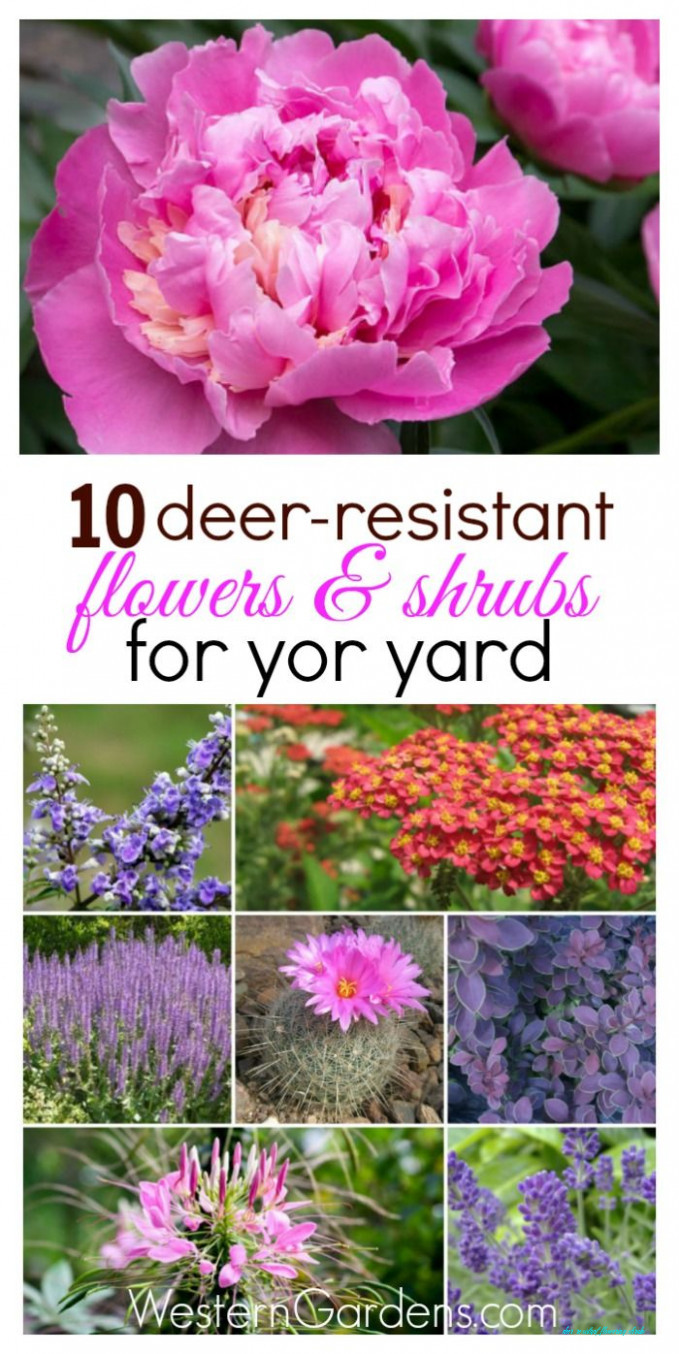
17 Deer-Resistant Plants | Deer resistant garden, Deer resistant .. | deer resistant flowering shrubs
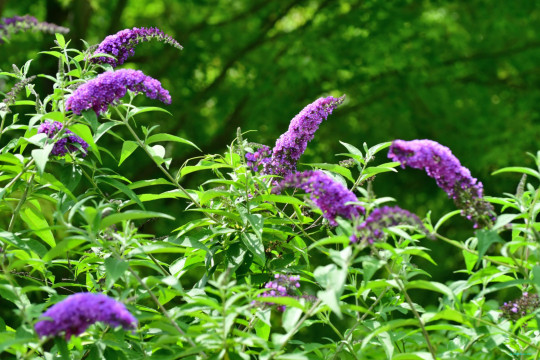
17 Best Deer-Resistant Shrubs for Landscaping – deer resistant flowering shrubs | deer resistant flowering shrubs
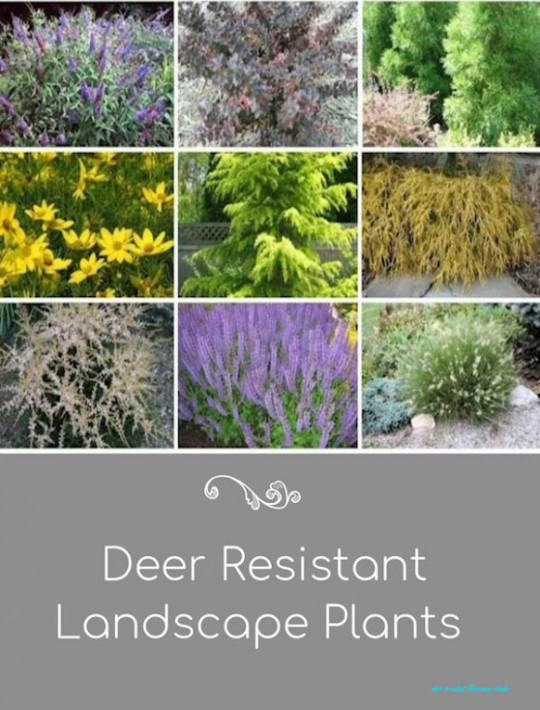
A GUIDE TO NORTHEASTERN GARDENING: Deer Resistant Plants in the .. | deer resistant flowering shrubs
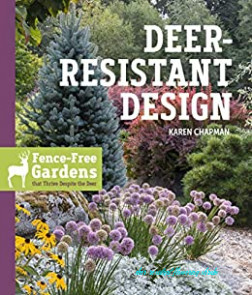
Deer-Resistant Design: Fence-free Gardens that Thrive Despite the .. | deer resistant flowering shrubs
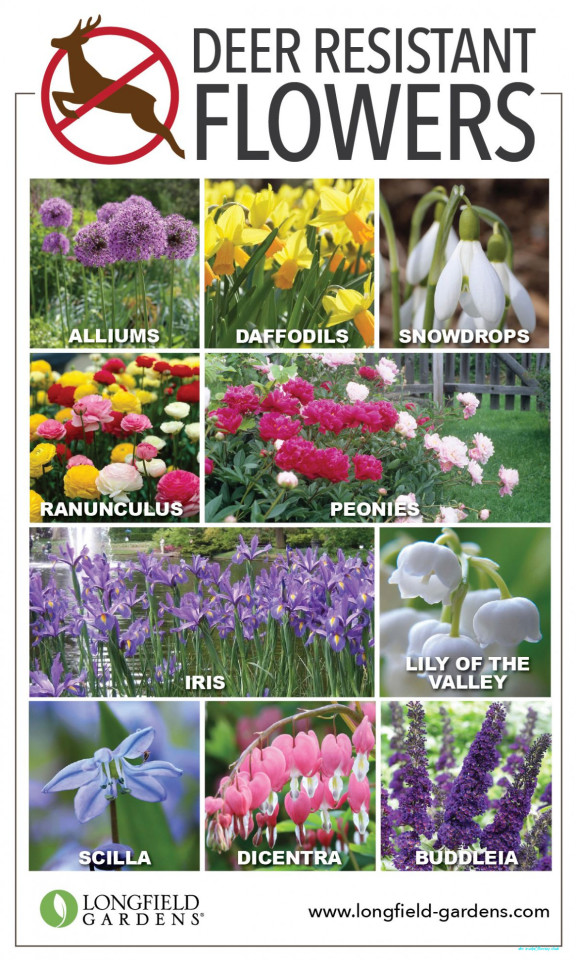
Deer Resistant Bulbs and Perennials (With images) | Deer resistant .. | deer resistant flowering shrubs
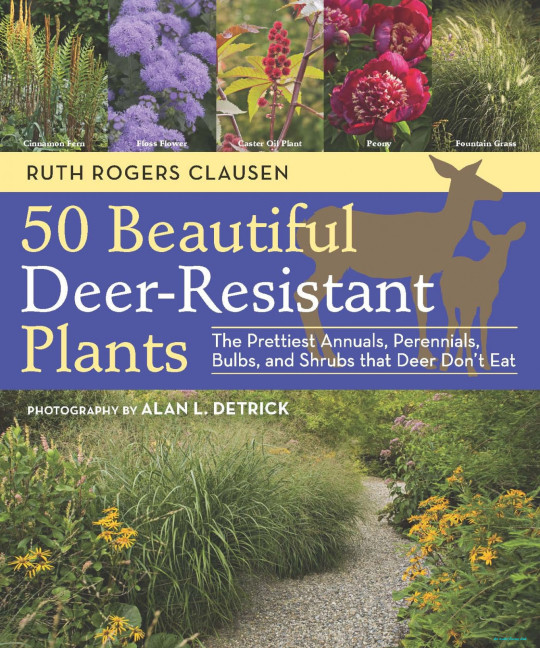
17 Beautiful Deer-Resistant Plants: The Prettiest Annuals .. | deer resistant flowering shrubs
The post This Story Behind Deer Resistant Flowering Shrubs Will Haunt You Forever! | Deer Resistant Flowering Shrubs appeared first on Flower Nifty.
from Wallpaper Nifty https://www.flowernifty.com/this-story-behind-deer-resistant-flowering-shrubs-will-haunt-you-forever-deer-resistant-flowering-shrubs/
0 notes
Text
Huckleberry Heaven
Howard Shapiro
Fall is fast approaching and I was able to get in the mountains last week before the seasons would change enough that the rains and eventual snow will fall ‘officially’ bringing autumm and winter. This is a time in the mountains when a little purplish blackish berry abounds. We call them Huckleberries and between hikers and bears there is a rush to taste their miniature goodness.

According to Bernadine Strik, a professor of horticulture and berry crops at Oregon State University, “Huckleberries are not technically huckleberries, common names can be misleading.”
Strik has been researching berries in the Pacific Northwest for more than three decades. Strik explains that true huckleberries are related to blueberries, it’s an entirely different genus.
“What we commonly called huckleberry [in the West] are native blueberry species, and all the different huckleberries that we have here are genus Vaccinium which is the same genus as commercial blueberries, and the same genus as other native blueberry species.”
In the West, there are at least seven Vaccinium species growing wild across Oregon, Washington, Idaho and parts of western Montana and western Wyoming. In the Northeast, there are Vaccinium corymbosum. Florida and the Southeast have Vaccinium darrowii and Vaccinium virgatum.
Strik says, “Interestingly, they don’t call them huckleberries, but here in the West, for some reason, we’ve called them huckleberries, even though they’re native blueberries.” This may be partially due to their smaller size. In the Vaccinium species, most of the flavor and aroma compounds are in the skin of the berry. “So when you have a smaller-fruited cultivar, many people tend to notice the flavor is more intense,” Strik said. “And that’s because you get a higher skin-to-pulp ratio.”Still, the name is hard to shake, so we split the difference and call these Vaccinium varieties Western huckleberries.
For thousands of years, Northwest tribes have harvested Western huckleberries for both food and traditional medicines. But these plants also hold a spiritual and cultural importance. Western huckleberries play a role in traditional legends and harvest times, offering an opportunity to gather with friends and family. Today many late summer hikers maintain a semblance of some of those same traditions with family hikes to the mountains in search of the sweet little gems.
Western huckleberries enjoy the higher elevations where there is rich acidic soil. You may often find Huckleberries in areas burned by wildfire. Indigenous peoples often maintained the Huckleberry patches with controlled burns to thin overgrowth and open the canopy. If the shade got too great above the plants, every five or so years the native peoples would use fire as a pruning mechanism to lessen the amount of shade falling on the plants. It’s a practice that indigenous groups such the Tulalip Tribe in Puget Sound and the Confederated Tribes and Bands of the Yakama Nation are working in collaboration with the Forest Service to ensure these practices.
Huckleberry flowers are pollinated by bees. Mountain Huckleberry is the dominant species of huckleberry consumed by Grizzly Bears and Black Bears; they eat the berries, leaves, stems and roots. Elk, moose and deer will also browse on the foliage. Small mammals, grouse and other birds also eat the berries as well as use the shrub as cover. We hikers do our own grazing from late August through September. The telltale sign of the presence of Huckleberries are their bright red leaves that alert our eyes and later our senses to the complex tasting berries.
After several days of granola and powdered milk for breakfast I couldn’t resist foraging some berries for our next mornings meal. The spark of flavor the Huckleberries ignited gave new life to what was fast becoming rather mundane. Because of their size it may take a little more time than you think to gather enough for more than a temporary treat. Don’t be dissuaded. Even stopping long enough along the trail for four or five berries can be motivation enough to continue up a long switchback.
Going up into the Cascades for a late summer hike provides intoxicating views and re-discovering the magic of wild Huckleberries. From the leaves that make high meadows glow red to the complex flavor of the berries themselves, whatever heaven is, this must be a hint of what it must be like.

9 notes
·
View notes
Text
Fast-Growing Ground Cover
Written by Sarah Littleton and https://www.bobvila.com/.
Ground cover is an eco-friendly solution that can enhance the look of your landscape while providing a number of important benefits. However, many varieties need several seasons to become established. If you don’t want to wait that long, The Grounds Guys have a number of options for a fast-growing ground cover that can quickly transform your outdoor space by filling in vacant or underdeveloped areas with texture and color.
The Best Low-Maintenance Ground Covers for Your Garden
Whether you do it yourself or you pay a landscaper, maintaining a vibrant garden and lush lawn requires time, effort, and money. One way to cut back on the energy and resources you put into your yard is to incorporate ground covers into the landscape.
Heuchera
An evergreen perennial, heuchera is known for its vibrant foliage, which ranges in color from silver to green to brown. The large, veined, heart-shaped leaves have a spread of 18-24 inches, and most varieties bloom in late spring with small pink flowers. When planted in groups, heuchera works well as a ground cover or along garden edging. The plant prefers partial shade or full sun and well-draining moist soil. What’s more, it requires relatively little maintenance, and it resists deer and other critters.
Honeysuckle
Want to lure hummingbirds, butterflies, and other wildlife to your garden? Plant some honeysuckle! Also known as lonicera, honeysuckle is an aromatic perennial that blooms with white, yellow, or red flowers in the spring and summer. Many homeowners position honeysuckle to grow vertically along trellises, but they can also serve as a beautiful ground cover. Honeysuckle grows best with full sun and moist soil, and the plant is resistant to heat.
Brass Buttons
Named for the color and shape of their flowers, brass buttons stand out perhaps most of all for their serrated, fern-like leaves. In fact, brass buttons share the same Achilles’ heel as ferns—both succumb easily to drought. In moist soil, however, brass buttons spread vigorously, forming two-inch-tall mats of growing strong and thick enough to withstand even regular foot traffic. In the South or West, the ground cover may lose its leaves or die back in the cold months. But in the right climate, brass buttons remain evergreen, beautiful, and low-maintenance all year round.
Creeping Phlox
Few ground covers ever look as beautiful as creeping phlox in spring when it produces an explosion of fragrant, star-shaped, pastel-color flowers. Of course, since it matures to a maximum height of only six inches tall, many gardeners choose to plant creeping phlox on a slope, or along the top of a retaining wall. That way, you don’t have to be standing directly over the plant in order to appreciate its beauty. That said, precisely because creeping phlox looks so beautiful from the top down, many use the ground cover to define the borders of garden paths. So long as the site affords full sun and good drainage, creeping phlox requires next to nothing in the way of care.
Creeping Jenny
Equally at home hanging from a planter or covering a hillside, Lysimachia (more commonly known as “Creeping Jenny”) is a plant known and revered for its trailing branches. Each plant takes on a green fountain-like appearance: Long, lush chutes of chartreuse foliage sprout up from the soil, then softly twist and tangle for full coverage wherever planted. Aside from good exposure to sunlight, these leafy green clusters ask little of their gardener—no need to deadhead branches that lose their vibrance, replant every season, or ward off hungry deer (they’re naturally resistant!).
Stonecrop
Need an easy, evergreen carpet to plant where no grass daring grow? Though its lush leaves don’t scream “drought-tolerant,” sedum boasts an ability to root and thrive in even the driest, rockiest settings—thus earning it the familiar name “stonecrop.” The secret? Those fleshy, bluish-green leaves help retain what little water it receives. Aid with a little mulching and weeding to prevent unwanted sprouts from stealing water from these low-maintenance succulents, and you can enjoy their cheery color year-round—even starry yellow buds when the plant blooms in spring.
Vinca Minor
The dainty purple flowers and evergreen leaves on this vine make it one of the most popular ground covers in residential and commercial landscaping. Also known as periwinkle, vinca minor will spread wherever it’s planted and will even scale trellises or fences if trained. Because vinca has few pests, it can be considered invasive, which is good news if your goal is to keep weeds at bay. If you want your vinca minor to play nice with other plantings, though, you’ll need to cut it back on a regular basis.
Lamium
Under even the most unforgiving of conditions, lamium prevails. This vining plant, also known as dead-nettles, can tolerate cold, heat, drought, and is deer-resistant. There are more than 40 species of lamium, but the best are those that are flowering perennials like the Pink Chablis. The low-maintenance plant thrives year-round, rewarding you with delicate blooms in spring and summer. Lamium spreads quickly, so be ready to cut it back if it begins to encroach on other shrubs and flowers.
Grace Ward Lithodora
Thanks to its bold blue hue and its ability to attract butterflies, the grace ward lithodora will add bursts of color to your landscape from spring throughout summer. A low-lying ground cover is a popular option as a filler for rock gardens or as an accent above retaining walls. In addition to making your garden look good, it also helps it out. The plant works as a natural deer repellent (the animals dislike the taste of the flowers) and works to control erosion. In extremely hot climates it needs a little shade, but otherwise, it enjoys being in the sun.
Creeping Thyme
The soft, aromatic creeping thyme seems to be a plant that checks off all the boxes for a gardener, plus more. The low-lying ground cover—it grows no more than four inches tall—is able to endure being stepped and stomped on, making it a smart choice for planting between pavers or replacing grass entirely. It’s preferable to moderate climates but is able to withstand full sun and drought-like conditions. It also works to control weeds from growing and is a natural deer repellent. And while deer might not like the creeping thyme’s pink flowers, it does attract butterflies and honeybees—it’s even believed that it enhances the honey’s flavor. On top of all of that, assuming you take proper care of the plant, it lasts for five to six years, in which during that time you can harvest your own fresh herbs!
Cover Up
Ground covers are an easy way to add color to your garden without much work. Want more fool-proof florals for your garden? These plants will thrive with minimal maintenance on your part.
Whether you’re a lawn care novice or a master gardener, everyone can use a little help around the yard. Subscribe to The Dirt newsletter for tips, recommendations, and problem-solving tools that can help you tame your great outdoors.
Original post here https://www.bobvila.com/slideshow/the-best-low-maintenance-ground-covers-for-your-garden-51253#bv-us.
The post Fast-Growing Ground Cover appeared first on John French Landscapes.
John French Landscapes
1 note
·
View note
Text
PLANTING DESIGN
Plants Home
Flowers
Annuals
Perennials
Shrubs
Bulbs
Vines
Succulents
Grasses
Trees
Vegetables
Houseplants
POPULAR PLANTS
Roses
Lavender
Hydrangeas
POPULAR PLANT LISTS
Mosquito-Repellent Plants
Deer-Resistant Plants
Native Plants
Drought-Tolerant Plants
Shade Plants
Low-Maintenance Plants
Foliage Plants
Hummingbird Plants
Flowers for Bees
Butterfly Garden Plants
Safe Plants for Cats & Dogs
Poisonous Plants for Dogs & Cats
Find a Garden Center that carries Proven Winners plants & products.
CREATE A GORGEOUS GARDEN
TWIST 'N PLANT
18 TYPES OF ORNAMENTAL GRASS TO GROW
Add year-round beauty to your yard with these ornamental grass varieties
By Janet Loughrey
FREE WEEKLY NEWSLETTER: Plants, Design Ideas, Gardening Solutions & More!
Japanese forest grass. (Hakonechloa macra 'Aureola'). Photo by Janet Loughrey.
Ornamental grasses offer subtle beauty and multi-seasonal interest, even when there’s not much else going on in the garden. Grown for their structure, texture, reliability and virtually carefree nature, the uses for ornamental grasses are many. Whether used as a background plant, hedging, erosion control along a slope, or a dazzling accent in a container or water feature, ornamental grasses make an invaluable addition to any landscape.
Many ornamental grasses are invasive in certain areas of the country. However, there are native and non-invasive alternatives for many of them. Also, in areas of high fire danger, grasses should be cut back to just a few inches once they have died back for the year. Otherwise, dried grasses and their seed heads can provide winter interest.
On this page: Tall Ornamental Grasses | Short Ornamental Grasses | Native Grasses
Love the look of ornamental grasses, but not sure how to incorporate them in your garden or landscape? See 5 Uses for Ornamental Grasses, from Proven Winners.
TALL ORNAMENTAL GRASS VARIETIES
Photo by: Proven Winners.
GRACEFUL GRASSES® PURPLE FOUNTAIN GRASS
Pennisetum setaceum ‘Rubrum’
Zones:
9-11
Height/Spread:
Upright arching habit, 2 to 4 feet tall and 2 to 3 feet wide
Exposure:
Full sun to partial shade
Add soft texture and graceful movement to the landscape, with months of color from summer to frost. Deep purple foliage is topped by dusky mauve flower plumes on graceful, arching stems. Grow this virtually carefree grass as hedging, massed along a slope, in a container by itself, or in combination with other plants. Treat as an annual in all but the warmest regions. Unlike some other fountain grasses, this does not reseed.
Learn more about how to grow and care for purple fountain grass.
King Tut® center (thriller). Photo by: Proven Winners.
GRACEFUL GRASSES® KING TUT®, Egyptian papyrus
Cyperus papyrus
Zones:
10-11
Height/Spread:
Upright open habit, 4 to 6 feet tall and 3 to 4 feet wide
Exposure:
Full sun to partial shade
This medium-sized aquatic sedge has triangular stems topped with bushy tassels that can reach 6 to 12 inches across. The graceful arching habit and showy flowers make a stunning statement when planted in shallow water at the edge of a pond or water feature. Use in a container as a stand-alone accent, or in combination with other annuals with similar needs. Treat as an annual in all but the warmest regions.
Photo by: Proven Winners.
GRACEFUL GRASSES® VERTIGO®, Elephant Grass
Pennisetum purpureum
Zones:
8-11
Height/Spread:
Upright bushy habit, 3 to 8 feet tall and 2 to 3 feet wide
Exposure:
Full sun
The deep midnight color, strappy foliage, and larger stature lend a commanding presence in the landscape. Use as a stand-alone container specimen, massed in the landscape, or in combination with other plants. The nearly black coloring contrasts dramatically with brighter hues such as gold, orange, or chartreuse. Combine with coleus, Rudbeckia, or sweet potato vine. Treat as an annual in cooler regions.
See more about where this grass may be aggressive.
Photo by: Proven Winners.
PRAIRIE WINDS® ‘BLUE PARADISE’, Little bluestem — Buy now from Proven Winners
Schizachyrium scoparium
Zones:
3-9
Height/Spread:
Upright vase-shaped habit, 3 to 3-1/2 feet tall and 2 feet wide
Exposure:
Full sun
The smokey mauve-blue foliage, vertical stature, and subdued texture lend sophistication to any style landscape. Use as a background element, in a mixed border, massed in a bed or along a slope. This North American prairie native supports insects and wildlife and can be naturalized in a field or open woodland setting. Burgundy-red fall foliage is especially dramatic when backlit by early or late-day sun. Exceptionally hardy in colder zones.
Photo by: Proven Winners.
‘KARL FOERSTER’, Feather reed grass — Buy now from Proven Winners
Calamagrostis x acutiflora
Zones:
5-9
Height/Spread:
Upright open habit, 3 to 6 feet tall and 2 to 3 feet wide
Exposure:
Full sun to partial shade
Feathery bronze flower spikes create texture and movement in the landscape, providing multi-seasonal interest from early summer through winter. This standard landscape plant is often used in public settings, valued for its toughness and reliability. Plant in a mixed border, or mass in landscape or curbside plantings. Tolerant of heat and heavy clay soil; grows in most regions.
Photo by: Proven Winners.
‘LITTLE ZEBRA’, Dwarf zebra grass — Buy now from Proven Winners
Miscanthus sinensis
Zones:
5-9
Height/Spread:
Upright arching habit, 3 to 4 feet tall and 2 to 3 feet wide
Exposure:
Full sun to partial shade
Zebra grass is grown for its attractive leaves, which have distinct horizontal bands, as well as the showy copper-pink flower plumes that appear in mid-summer. Long popular with avid gardeners, the green-and-gold striped foliage makes this an outstanding background plant in a mixed border. This dwarf form was developed for smaller spaces, with a shorter stature that stays more upright. Grow in containers, mass plantings, as hedging or a focal point.
See more about where this grass may be problematic.
Photo by: Peter Turner Photography / Shutterstock.
NEW ZEALAND FLAX
Phormium tenax, P. cookianum and hybrids
Zones:
8-11
Height/Spread:
Upright or arching habit, 1-1/2 to 12 feet tall and 1-1/2 to 10 feet wide
Exposure:
Full sun to partial shade
New Zealand flax creates high drama in the garden with bold architectural structure and upright spiky foliage. It occurs in a range of colors and sizes, making a versatile design element in any space, from small urban yards to larger landscapes. Use as a focal point in a border or container. Combine with plants with softer texture and flowers for contrast. In cooler regions, this can be grown as an annual.
SHORT ORNAMENTAL GRASS VARIETIES
Prince Tut™ center (thriller). Photo by: Proven Winners.
GRACEFUL GRASSES® PRINCE TUT™, Dwarf Egyptian papyrus
Cyperus papyrus
Zones:
10-11
Height/Spread:
Upright open habit, 1-1/2 to 2-1/2 feet tall and 2 to 3 feet wide
Exposure:
Full sun to partial shade
This aquatic African sedge, which is grown as an annual in most regions, is a popular choice for boggy soils, or along the shallow edge of a pond or marsh. The graceful vase-shaped habit and showy flower tufts lend an exotic look, with striking architectural appeal. This dwarf variety, with sturdy stems that won’t flop, is a good choice for containers and small water features.
Blue Mohawk®, center. Photo by: Proven Winners.
GRACEFUL GRASSES® BLUE MOHAWK®, Soft rush
Juncus inflexus
Zones:
5-9
Height/Spread:
Upright spiky or arching habit, 2 to 3 feet tall and 1-2 feet wide
Exposure:
Full sun to partial shade
This hardy rush or sedge is grown for its dense upright clusters of reed-like blades and tiny cone-like tan flowers. Tough and versatile, this hardy grass prefers moist soil conditions or shallow water such as found alongside stream beds and marshes. Create year-round structural interest, even in winter with a fresh coat of snow. Plant in a water feature, rain garden, or an area of the yard with boggy soil.
See where this grass may be problematic.
Photo by: Proven Winners.
GRACEFUL GRASSES® BABY TUT, Umbrella grass
Cyperus involucratus
Zones:
9-11
Height/Spread:
Upright open or arching habit, 1-1/2 feet tall and wide
Exposure:
Full sun to partial shade
This aquatic sedge is grown for its exotic appearance, vase-shaped structure and radiating umbrella-like leaf bracts. Also known as dwarf papyrus grass, the diminutive stature makes this a good choice for small spaces. Grow in wet, boggy soils, or shallow water at the edge of a pond or water feature. Use in containers, rain gardens, and miniature ponds. Treat as an annual in cooler regions. In frost-free climates, plants can spread aggressively through self-seeding and root rhizomes.
See where this grass may be problematic.
Photo by: Proven Winners.
GRACEFUL GRASSES® ‘FIREWORKS’, Variegated red fountain grass
Pennisetum setaceum ‘Fireworks’
Zones:
9-11
Height/Spread:
Open arching habit, 2 to 3 feet tall and 1-1/2 to 2 feet wide
Exposure:
Full sun
This variation of the more common purple fountain grass is grown for its striking variegated foliage with stripes of purple, burgundy, green and white. Pale burgundy flower tassels appear from mid-summer to frost. This more compact variety is suitable for small urban yards. Mass in the landscape, or plant in a container by itself or in combination with other plants with similar needs. Treat as an annual in most regions. Does not reseed like some other pennisetums.
Photo by: Proven Winners.
GRACEFUL GRASSES® TOFFEE TWIST, Toffee Twist sedge
Carex flagellifera
Zones:
7-10
Height/Spread:
Upright bushy or arching habit, 1-1/2 to 2 feet tall and wide
Exposure:
Full sun to partial shade
Grown for its fine-textured foliage and graceful arching structure, this carefree sedge makes an elegant container accent or contrasting design element to flowering annuals and perennials. Plant at the front of a mixed border or mass along a slope for erosion control. The compact size makes this a good choice for small urban spaces, and the rustic brown foliage complements any color scheme or garden style.
Photo by: Walters Gardens.
‘BLUE WHISKERS’ Blue fescue — Buy now from Proven Winners
Festuca glauca
Zones:
4-8
Height/Spread:
Clumping habit, 10 to 12 inches tall and 24 to 28 inches wide
Exposure:
Full sun to partial shade
Steel-blue whisker-like foliage and tan seed heads complement most other colors, making this a versatile design choice. This fine-textured grass makes a striking accent in a container or the landscape. With tolerance to drought and poor soils, along with its spreading habit, this makes a good choice for massing in a bed or along a slope for erosion control. Smaller than blue oat grass, the compact size is especially suited to urban lots. Exceptionally hardy in colder regions.
Photo by: Janet Loughrey.
JAPANESE FOREST GRASS, syn. Golden Japanese forest grass, Hakone grass
Hakonechloa macra ‘Aureola’
Zones:
5-9
Height/Spread:
Mounding weeping habit, 1 to 1-1/2 feet tall and 2 feet wide
Exposure:
Partial shade, with protection from hot afternoon sun
One of the few ornamental grasses that thrives in partial shade, this golden variety is especially useful for illuminating darker spaces. Leaves are variegated, with thin stripes of gold and green that acquire hints of coppery pink in fall. The elegant cascading form is popular in Japanese-style and other formal landscapes, and takes a dormant rest in late fall. Combine with other woodland shade lovers such as hostas, ferns, azaleas and Japanese maple. Use along the front of a mixed border, in mass plantings or containers.
Photo by: Proven Winners.
‘EVERGOLD’, Japanese Sedge — Buy now from Proven Winners
Carex oshimensis 'Evergold' (syn. C. hachijoensis)
Zones:
5-9
Height/Spread:
Mounding arching habit, 8 to 18 inches tall and 1 to 2 feet wide
Exposure:
Full sun to partial shade
Weeping variegated foliage is eye-catching in a container, rock garden, or mixed border. Strappy fine-textured leaves, which have a gold stripe down the middle and contrasting green margins, stand out in the landscape. The diminutive stature and compact growth habit makes this a good choice for small spaces. Use as a stand-alone accent, as edging, in mass plantings, or container combinations. Somewhat shade tolerant.
Photo by: Proven Winners.
MEXICAN FEATHER GRASS — Buy now from Proven Winners
Stipa tenuissima (syn. Nassella tenuissima)
Zones:
6-10
Height/Spread:
Upright arching habit, 1 to 3 feet tall and 1 to 2 feet wide
Exposure:
Full sun to partial shade
Grown for its ethereal cloud-like plumes that sway in the slightest breeze, Mexican feather grass is useful for creating dynamic movement and fine texture in the landscape. Combine with bold structural plants such as globe allium for visual contrast. Plant in containers, massed in a bed or along a slope. Drought-tolerance and carefree nature makes this a good choice for xeriscapes and rock gardens. An emerging invasive plant in California, as it can self-sow readily. (Plantright.org offers more information and suggested alternatives for California gardens.)
Alternatives: Bouteloua gracilis ’Blonde Ambition’ blue grama grass, alkali sacaton (Sporobolus airoides), Mexican deer grass (Muhlenbergia dubia), purple three-awn (Aristida purpurea), and autumn moor grassSesleria autumnalis)
Photo by: atiger / Shutterstock.
PINK MUHLY GRASS
Muhlenbergia capillaris
Zones:
6-9
Height/Spread:
Upright mounding habit, 2 to 3 feet tall and wide
Exposure:
Full sun to partial shade
For high drama in the late-season landscape, few plants rival that of pink muhly grass. From late summer to fall, bright pink seed heads form billowy cotton candy-like drifts, creating soft texture and riveting color, especially when backlit by early or late day sun. Plant in drifts for maximum impact along a slope, or naturalize in a meadow or native garden. The seed heads fade to tan, creating long-lasting winter interest in the garden.
Photo by: Kathryn Roach / Shutterstock.
BLUE OAT GRASS
Helictotrichon sempervirens
Zones:
4-8
Height/Spread:
Mounding arching habit, 2 to 4 feet tall and 2 to 3 feet wide
Exposure:
Full sun to partial shade
Popular in public landscapes and home gardens, this commonly used ornamental grass is grown for its pale blue foliage, fine texture and graceful seed panicles. This reliable grass is valued for its low-maintenance, tolerance of a wide range of growing conditions, and hardiness. Use in containers, at the edge of a mixed border, or massed as a groundcover. Combine with lavender, daylilies, catmint, and sedums for a low-maintenance landscape. Evergreen in milder regions.
NATIVE GRASSES
North American natives:
Panicum virgatum Prairie Winds® 'Apache Rose', 'Cheyenne Sky', or 'Totem Pole' switch grass
Panicum virgatum 'Northwind'
Panicum virgatum 'Ruby Ribbons'
Panicum virgatum 'Purple Tears'
Panicum virgatum 'Shenandoah'
Western natives:
Juncus patens ‘Elk Blue’, blue rush
Calamagrostis foliosa, Cape Mendocino reed grass
Bouteloua ‘Blonde Ambition’, eyelash grass
Carex nudata, torrent sedge
Elymus condensatus ‘Canyon Prince’, giant reygrass
Muhlenbergia lindheimeri, Lindheimer’s muhly
Muhlenbergia dubia, pine muhly
RELATED:
Ornamental Grasses for the Garden
Grasses as Container Plants
JOIN 100,000 GARDEN LOVERSGet plant information, gardening solutions, design inspiration and more in our weekly newsletter.
I give my consent to be emailed
I give my consent for my email activity to be trackedSIGN UP TODAY!
* Required Fields
Copyright 2021. All Rights Reserved. Reproduction in whole or in part without permission is prohibited.
We will never sell or distribute your email to any other parties or organizations.
More about the newsletter
Follow Us
Contact Us Advertise with Us Privacy Policy Cookie Policy Site Map Terms and Conditions
0 notes
Text
Perennial favorites
“When the sun rises, I go to work. When the sun goes down, I take my rest. I dig the well from which I drink, I farm the soil which yields my food, I share creation. Kings can do no more.” Chinese proverb
In the sizzling heat of summer, many annuals go to seed and flowers fade. Thankfully there are plants besides cacti and succulents that enjoy the higher temperatures. Most of my favorite summer bloomers are perennials that once established require minimal irrigation.
My top ten summer flowering favorites include acanthus, agapanthus, bougainvillea, bower vine, crape myrtle, crocosmia, daylily, hollyhock, hydrangea, and rose. I also am a huge fan of the Naked Lady, but it sprouts its neck later in August, lasting through the fall months. Acanthus:
Also known as Bear’s breeches, Acanthus can be deciduous or evergreen growing from rhizomes. It is drought tolerant with shiny oval leaves lobed with spines and spires of flowers that are purple, white, pink, cream, or green. It doesn’t like full sun when it is hot, so it may be best to grow Acanthus in partial shade. The flower spikes can grow to five feet. I like it as a back border plant or to line a path. The good news: butterflies flock to it. The bad news: deer devour it. Cut it to the ground in the fall and it will re-emerge in the spring. Greek Corinthian column capitals were and are modeled after the Acanthus plant.
Agapanthus:
Another rhizome spreader that is hardy in drought times, yet pretty in bloom is the Lily of the Nile or African Lily that we know as Agapanthus. The rhizomes retain water and divide easily to plant in other locations. They prefer a sunny location, although I’ve seen many beautiful specimens growing in the shade. The sky blue, midnight blue, or white trumpet-shaped flowers bloom June through the end of August with stalks that reach four feet high. The elegant strap-like leaves are evergreen. When planting work compost and organic matter into the soil and continue to fertilize during the growing season. Deadhead when the flowers fade and toss them on the compost pile. Wear gloves when working with this plant as it is poisonous and could cause an allergic reaction in those who are prone to plant allergies.
Bougainvillea:
A gorgeous tropical vining shrub, bougainvillea flowers are modified leaves called bracts blooming in colors of yellow, orange, white, and my personal favorite, fluorescent pink. Native to arid climates, bougainvillea thrives in hot weather and needs full sun while requiring a minimum of H20. On our ranch, bougainvillea covered one full side of our two-story farmhouse delighting our family year after year with a spectacular showcase of hues. Plant bougainvillea on a strong structure or well-made fence. It can be pruned when it starts to rain or after flowering. Since it is susceptible to frost, cover with burlap in the winter to protect it if your plant is small enough.
Bower Vine:
This is the most perfect flowering evergreen vine for pergolas, arbors, and trellises. Grow bower vine over awnings, around windows and doors, or as a gate climber. It is easy to care for, doesn’t invade a roof or siding, and is a swift grower. Blooming throughout spring, summer, and fall, flowers are pink and white with deep-throated trumpets attractive to hummingbirds. I grow bower vines in full sun and partial shade. Once established they don’t require much water while providing year-round beauty with their shiny green leaves. Prune whenever the vine needs a bit of TLC as this vine is not fussy. Cut stems to add to indoor arrangements.
Crape Myrtle:
The crape myrtle is hands-down one of my very favorite specimens because of its beauty and interest in every season. In summer the bush or tree is covered in showy flowers, in fall the leaves change to gorgeous red, umber, and gold, in winter the leaves fall off showcasing beautiful bark, and in spring the shiny green leaves sprout. All crape myrtles bloom on new wood and come in colors that include watermelon, red, white, pink, lavender, and purple. I prune my purple shrubs in early winter to twelve inches from the ground and by summer they have grown to three feet high. Prune trees periodically to keep them shaped. Although crape myrtles prefer acidic soil, they will grow in sand, clay, or loam. The Chinese Lagerstroemia indica crape myrtle is prone to powdery mildew so look for a cross with the Japanese L. fauriei to enjoy glorious blooms, attractive bark, and leaves without any issues. They are drought resistant, too!
Crocosmia:
This firecracker plant boasts a tropical origin with bright blazing orange, yellow, red flowers that light up the summer garden. In our region, they start blooming right in time for the fireworks of Independence Day and continue until autumn. Their sword-like foliage offers spikey interest to the landscape. Hummingbirds and butterflies are especially attracted to the trumpet-shaped blooms while deer and rabbits stay away. The corms naturalize and the stalks make excellent floral displays. After the flowers are spent, the seedpods provide additional appeal.
Daylily:
Sometimes called “ditch weed”, daylilies will grow anywhere! Their botanical name is Hemerocallis from the Greek word hemera meaning day and kallos meaning beauty. They tolerate every kind of soil, are extremely low-maintenance, and require minimal irrigation once established. They are not a true lily as they have fleshy roots as opposed to bulbs. The leaves grow from a crown and the flowers form on a leafless stem called a “scape”. Most do not self-sow. Divide the roots every three to five years to create more plants. Each flower blooms for only a day, but each scape will have a dozen or more buds that will continue to open. A variety of colors and shades are available with butter yellow being the most ubiquitous. Every part of the daylily is edible. Sauté the buds in butter, garlic, and a little white wine for a delicious veggie treat that tastes like asparagus mixed with peas.
Hollyhock:
Happy memories surround the legacy of my hollyhocks. I can’t remember a time when hollyhocks were not growing in my mother’s or grandmother’s gardens. My seeds are heirlooms from several generations of family gardeners with a history that goes back over a hundred years. Hollyhocks are the classic cottage garden staple that every gardener should include for spikey tall stalks of pink, white, magenta, and red blooms that will continue until winter. A member of the hibiscus family, this self-seeding China native grows best in full sun in rich, well-drained soil. Because they grow to fifteen feet or more, plant towards the back of the garden or near a fence. By deadheading when the flowers fade, you will encourage continuous bloom production. Prune to the ground by winter and save the seedpods to share.
Hydrangea:
Another favorite plant for generations of gardeners, hydrangeas produce abundant blooms in partial sun. They are thirsty plants and need mulch around them to improve the soil texture and maintain moisture. Pruning hydrangeas is tricky because it is necessary to know what type you have as different hydrangeas require different pruning times and methods. The most common hydrangeas are Bigleaf, Oakleaf, Mountain, and Climbing which are pruned after summer blooming. They rebloom on “old wood” which are the stems from the previous season. Panicle and Smooth hydrangeas bloom on new wood (the stems from this season) and must be pruned before the buds form. I’m looking forward to trialing new Panicles from Proven Winners which will include Limelight Prime and a space-saving Fire Light Tidbit that will have cream-colored flowers covering the plant in summer, then turning to pink and lasting through frost.
Rose:
No introduction is necessary for the fabulousness of the rose. Roses are the most versatile, beautiful, and coveted plant in every garden. When gardeners proclaim roses to be the bedrock of their landscape, they are not exaggerating. Roses come in every color, shade, petal, and size to suit every desire. Roses are a diverse group of plants that include shrub roses, carpet roses, floribundas, hybrid teas, climbing, old roses, rambling roses, and tree roses. Their shapes and structures differ. Some look like peonies, others have a single floral pattern. There are rosettes, cups, doubles, pompons, button-eyed, incurved, recurved, and quartered. My favorites are David Austin roses with intoxicating fragrance, fine foliage, disease resistance, and stunning flowers. Over a hundred roses grace my landscape and I am constantly adding more. As Emma Goldman stated, “I’d rather have roses on my table than diamonds on my neck.”
When the sun rises, I go to work, spending as much time in nature as feasible. Consider planting some of my perennial favorites to enjoy elegance and exquisite allure throughout the summer months.
Stay cool, hydrated, and share creation.
Happy Gardening. Happy Growing.
Photos: https://www.lamorindaweekly.com/archive/issue1511/Digging-Deep-with-Goddess-Gardener-Cynthia-Brian-Perennial-favorites.html
Cynthia Brian, The Goddess Gardener, is available for hire to help you prepare for your spring garden. Raised in the vineyards of Napa County, Cynthia is a New York Times best-selling author, actor, radio personality, speaker, media and writing coach as well as the Founder and Executive Director of Be the Star You Are!® 501 c3. Tune into Cynthia’s StarStyle® Radio Broadcast at www.StarStyleRadio.com.
Buy copies of her best-selling books, including, Chicken Soup for the Gardener’s Soul, Growing with the Goddess Gardener, and Be the Star You Are! Millennials to Boomers at www.cynthiabrian.com/online-store. Receive a FREE inspirational music DVD.
Hire Cynthia for writing projects, garden consults, and inspirational lectures.
www.GoddessGardener.com
0 notes
Photo




Lowbush Blueberry • Vaccinium angustifolium
Plant Community: Oak Hickory
Native Status: Native to North Eastern North America
Mature Size (h, w): 2ft, 2ft
Habitat/Preferred Conditions: Tolerant of challenging, disturbed soils. Fire tolerant. Prefers well-drained, medium moisture soil. Full sun to partial shade.
Eco-indicator: Indicates dry, acidic sites
Hardiness zone: 3-7
Leaf Color: Green (Summer), Red (Fall)
Flower Color: White
Bloom Time: Early Summer
Theme:
These nutritious berries are an extremely popular food source for pollinators of the insect, bird, and mammalian variety. The flowers require pollination from bees to produce fruit and provide a source of nectar. Additionally, black bear, deer, and robins consume the bush’s berries and circulate the seeds. Other consumers of this plant’s fruit include a wide range of birds and mammals, such as: racoons,

http://thelife-animal.blogspot.com/2012/01/raccoon.html
the red and black voles, and

http://www.oregonconservationstrategy.org/strategy-species/red-tree-vole/
and the eastern spotted skunk.

http://www.factzoo.com/mammals/eastern-spotted-skunk-small-agile-stinker.html
This plant’s berries are not palatable to domestic sheep, making them sheep-resistant and suitable to be planted near sheep farms.
Sources:
https://www.wildflower.org/plants/result.php?id_plant=vaan
http://hort.uconn.edu/detail.php?pid=518
https://extension.umaine.edu/blueberries/factsheets/cultivated-lowbush-blueberries/home-garden-lowbush-blueberry-planting-guide/
https://extension.unh.edu/resource/growing-fruits-wild-lowbush-blueberries-fact-sheet
https://www.fs.fed.us/database/feis/plants/shrub/vacang/all.html
https://gobotany.nativeplanttrust.org/species/vaccinium/angustifolium/
#vertical: herb#place: brooks#pollinator: insect#pollinator: bird#pollinator: mammal#pollinator: bee#pollinator: bear#pollinator: robin#sheep resistant#pollinator: skunk#pollinator: vole#pollinator: deer#pollinator: raccoon#community: oak hickory
0 notes
Text
Cherry Laurel – the Top-pick Easy Evergreen Shrub
It doesn’t matter how much or how little you garden, or how complex or simple your garden is, evergreens are going to be an essential part of it. They provide structure as screens or hedges, and they fill out empty corners with the perfect background. Around the house they give permanence to your foundation planting, and in the garden they keep things calm on the eyes, while flowers and leaves come and go around them.
Evergreens are essential, but we don’t want them to take up our time or be ‘fussy’ and difficult to grow – no, we want them to do their thing quietly and efficiently in the background, with a periodic trim being about all the care they need. If you are looking for evergreens like that, which are attractive all year round, yet never ask for much at all, then Cherry Laurels are the plants for you.
Just look at what they bring to your garden:
Handsome, glossy leaves all year round
Grow vigorously almost anywhere
Ridiculously easy to grow
Pest and problem free
Drought, shade and deer resistant
Convinced yet? Truly, Cherry Laurel – which comes in several forms in different sizes, depending on your garden and your needs – is the top-pick evergreen of every smart gardener.
More About Cherry Laurel
Cherry Laurel comes in lots of sizes, but it always has simple, oval leaves that can be 4 to 8 inches long, depending on the variety. The leaves are glossy, and a rich, healthy green color, so they always look good in your garden. It grows naturally into a dense shrub, so its ideal for screening or filling spaces, even if you don’t bother to trim it. It is hardy anywhere from zone 6 to zone 8, so outside of the colder states, it can be grown all across the country, except for Florida and southern Texas. In spring untrimmed plants will produce upright clusters of white scented flowers, sometimes followed by black berries. Just one warning, although birds love them, those berries can be bad for you, so don’t let your children go sampling them. Plants that are regularly trimmed rarely produce flowers or berries, and you can avoid berries by trimming after flowering is over.
In some parts of the country Cherry Laurel is called English Laurel, so when buying it look for it by its scientific name – Prunus laurocerasus – and you can’t go wrong. It came to America with the early settlers, who knew a useful plant when they saw one, but before that it grew wild around the Black Sea.
Every garden has areas of shade – often deep shade, beneath larger trees, and there the soil is often dry too – literally a killer combination for almost any plant. But not for the Cherry Laurel. It is renowned for its ability to survive in those darkest corners – it may not grow quite so dense, but it will make a respectable filler where almost nothing else will grow. If those spots are problem areas in your garden, then the problem is solved. Of course it will also grow in partial shade and full sun too.
Cherry Laurel will grow in almost any soil, no matter if it is sandy or clay, wet or dry. It is happy in urban areas, and air pollution doesn’t bother it – it fact it cleans the air for you. Deer almost never eat it (never say ‘never’ about deer!) and it has no pests or diseases that trouble it or need spraying or other controls. If this sounds too good to believe, it really isn’t – you will see when you start growing it. If your goal is to improve your garden, and not interfere with your other activities, then this is the plant for you.
Varieties of Cherry Laurel
Now you have decided to pick Cherry Laurel for your garden, it’s time to look at the options. Some older gardeners might tell you it gets really big, but today we have different forms available, so you don’t have to worry about it taking over your small space. Some of the varieties you can grow include:
Otto Luyken Cherry Laurel
This variety is so special it won an award from the Royal Horticultural Society in England, so you can see how good it is. For smaller gardens this has become the ‘go to’ choice, and no wonder. Unlike the big old-fashioned forms, this shrub grows wide, and not so tall. It will usually reach just 3 or 4 feet tall, but that plant can be 6 or 8 feet wide. The leaves are smaller too, making a lovely compact plant. Use it to fill larger spaces, without blocking the view from windows, or from across your garden. It may eventually start to grow taller, but if you don’t want that, just take your pruners and cut off any shoots that push up too tall – it’s that easy. This low growth makes it ideal for planting around your home, or for making a low barrier between one part of your garden and another. Use it for a friendly hedge that shows where your property starts but doesn’t block chatting with neighbors.
Apart from its low height, the great thing about this variety is its flowering. While other Cherry Laurel produce a few flowers, this one is smothered every year is a bold display of creamy-white blooms that almost hide the foliage. A light trim after flowering will prevent any berries forming, but if you trim it much outside that time you may reduce the quantity of flowers, which would be a shame.
Skip Cherry Laurel
Also known as Schikpa, or by its full name as ‘‘Schipkaensis’, this should be your first choice for that big screen or hedge, that is going to give you privacy and quiet all year round. That’s right, not only does a dense evergreen hedge block prying eyes or ugly views, it filters noise, turning your garden into a tranquil haven. As well it filters the air of dust and pollutants – so it’s a win-win all round.
The Skip Cherry Laurel will become a ten-foot hedge is four or five years, if you water and fertilize it regularly. Yes, you did read that right. In just a few years you have a mature screen of handsome rich green foliage. You can prune it into a neat hedge, or just let it grow naturally into something more casual, but just as beautiful. Over time it may grow well over 15 feet tall, and be about 6 feet wide, so allow enough room when planting so that it doesn’t develop space issues. Plant at least 3 feet from a wall, fence or boundary, and space your plants 4 or even 5 feet apart for a screen.
Dwarf English Laurel
This variety is a selection of unknown origin that grows to a medium size of 4 to 6 feet tall – right between the other varieties, making it ideal for a low privacy hedge, or for a taller, background plant behind your flowering shrubs. It is versatile enough to use almost anywhere in the garden, especially in those dark, shady spots where you can’t get other plants to grow.
Whatever variety you choose, you can plant with confidence, knowing that your Cherry Laurel will do the job you have chosen it for – easily.
Cherry Laurel – the Top-pick Easy Evergreen Shrub posted first on https://www.thetreecenter.com
0 notes
Text
Cherry Laurel – the Top-pick Easy Evergreen Shrub
It doesn’t matter how much or how little you garden, or how complex or simple your garden is, evergreens are going to be an essential part of it. They provide structure as screens or hedges, and they fill out empty corners with the perfect background. Around the house they give permanence to your foundation planting, and in the garden they keep things calm on the eyes, while flowers and leaves come and go around them.
Evergreens are essential, but we don’t want them to take up our time or be ‘fussy’ and difficult to grow – no, we want them to do their thing quietly and efficiently in the background, with a periodic trim being about all the care they need. If you are looking for evergreens like that, which are attractive all year round, yet never ask for much at all, then Cherry Laurels are the plants for you.
Just look at what they bring to your garden:
Handsome, glossy leaves all year round
Grow vigorously almost anywhere
Ridiculously easy to grow
Pest and problem free
Drought, shade and deer resistant
Convinced yet? Truly, Cherry Laurel – which comes in several forms in different sizes, depending on your garden and your needs – is the top-pick evergreen of every smart gardener.
More About Cherry Laurel
Cherry Laurel comes in lots of sizes, but it always has simple, oval leaves that can be 4 to 8 inches long, depending on the variety. The leaves are glossy, and a rich, healthy green color, so they always look good in your garden. It grows naturally into a dense shrub, so its ideal for screening or filling spaces, even if you don’t bother to trim it. It is hardy anywhere from zone 6 to zone 8, so outside of the colder states, it can be grown all across the country, except for Florida and southern Texas. In spring untrimmed plants will produce upright clusters of white scented flowers, sometimes followed by black berries. Just one warning, although birds love them, those berries can be bad for you, so don’t let your children go sampling them. Plants that are regularly trimmed rarely produce flowers or berries, and you can avoid berries by trimming after flowering is over.
In some parts of the country Cherry Laurel is called English Laurel, so when buying it look for it by its scientific name – Prunus laurocerasus – and you can’t go wrong. It came to America with the early settlers, who knew a useful plant when they saw one, but before that it grew wild around the Black Sea.
Every garden has areas of shade – often deep shade, beneath larger trees, and there the soil is often dry too – literally a killer combination for almost any plant. But not for the Cherry Laurel. It is renowned for its ability to survive in those darkest corners – it may not grow quite so dense, but it will make a respectable filler where almost nothing else will grow. If those spots are problem areas in your garden, then the problem is solved. Of course it will also grow in partial shade and full sun too.
Cherry Laurel will grow in almost any soil, no matter if it is sandy or clay, wet or dry. It is happy in urban areas, and air pollution doesn’t bother it – it fact it cleans the air for you. Deer almost never eat it (never say ‘never’ about deer!) and it has no pests or diseases that trouble it or need spraying or other controls. If this sounds too good to believe, it really isn’t – you will see when you start growing it. If your goal is to improve your garden, and not interfere with your other activities, then this is the plant for you.
Varieties of Cherry Laurel
Now you have decided to pick Cherry Laurel for your garden, it’s time to look at the options. Some older gardeners might tell you it gets really big, but today we have different forms available, so you don’t have to worry about it taking over your small space. Some of the varieties you can grow include:
Otto Luyken Cherry Laurel
This variety is so special it won an award from the Royal Horticultural Society in England, so you can see how good it is. For smaller gardens this has become the ‘go to’ choice, and no wonder. Unlike the big old-fashioned forms, this shrub grows wide, and not so tall. It will usually reach just 3 or 4 feet tall, but that plant can be 6 or 8 feet wide. The leaves are smaller too, making a lovely compact plant. Use it to fill larger spaces, without blocking the view from windows, or from across your garden. It may eventually start to grow taller, but if you don’t want that, just take your pruners and cut off any shoots that push up too tall – it’s that easy. This low growth makes it ideal for planting around your home, or for making a low barrier between one part of your garden and another. Use it for a friendly hedge that shows where your property starts but doesn’t block chatting with neighbors.
Apart from its low height, the great thing about this variety is its flowering. While other Cherry Laurel produce a few flowers, this one is smothered every year is a bold display of creamy-white blooms that almost hide the foliage. A light trim after flowering will prevent any berries forming, but if you trim it much outside that time you may reduce the quantity of flowers, which would be a shame.
Skip Cherry Laurel
Also known as Schikpa, or by its full name as ‘‘Schipkaensis’, this should be your first choice for that big screen or hedge, that is going to give you privacy and quiet all year round. That’s right, not only does a dense evergreen hedge block prying eyes or ugly views, it filters noise, turning your garden into a tranquil haven. As well it filters the air of dust and pollutants – so it’s a win-win all round.
The Skip Cherry Laurel will become a ten-foot hedge is four or five years, if you water and fertilize it regularly. Yes, you did read that right. In just a few years you have a mature screen of handsome rich green foliage. You can prune it into a neat hedge, or just let it grow naturally into something more casual, but just as beautiful. Over time it may grow well over 15 feet tall, and be about 6 feet wide, so allow enough room when planting so that it doesn’t develop space issues. Plant at least 3 feet from a wall, fence or boundary, and space your plants 4 or even 5 feet apart for a screen.
Dwarf English Laurel
This variety is a selection of unknown origin that grows to a medium size of 4 to 6 feet tall – right between the other varieties, making it ideal for a low privacy hedge, or for a taller, background plant behind your flowering shrubs. It is versatile enough to use almost anywhere in the garden, especially in those dark, shady spots where you can’t get other plants to grow.
Whatever variety you choose, you can plant with confidence, knowing that your Cherry Laurel will do the job you have chosen it for – easily.
Cherry Laurel – the Top-pick Easy Evergreen Shrub published first on https://www.thetreecenter.com
0 notes
Text
Cherry Laurel – the Top-pick Easy Evergreen Shrub
It doesn’t matter how much or how little you garden, or how complex or simple your garden is, evergreens are going to be an essential part of it. They provide structure as screens or hedges, and they fill out empty corners with the perfect background. Around the house they give permanence to your foundation planting, and in the garden they keep things calm on the eyes, while flowers and leaves come and go around them.
Evergreens are essential, but we don’t want them to take up our time or be ‘fussy’ and difficult to grow – no, we want them to do their thing quietly and efficiently in the background, with a periodic trim being about all the care they need. If you are looking for evergreens like that, which are attractive all year round, yet never ask for much at all, then Cherry Laurels are the plants for you.
Just look at what they bring to your garden:
Handsome, glossy leaves all year round
Grow vigorously almost anywhere
Ridiculously easy to grow
Pest and problem free
Drought, shade and deer resistant
Convinced yet? Truly, Cherry Laurel – which comes in several forms in different sizes, depending on your garden and your needs – is the top-pick evergreen of every smart gardener.
More About Cherry Laurel
Cherry Laurel comes in lots of sizes, but it always has simple, oval leaves that can be 4 to 8 inches long, depending on the variety. The leaves are glossy, and a rich, healthy green color, so they always look good in your garden. It grows naturally into a dense shrub, so its ideal for screening or filling spaces, even if you don’t bother to trim it. It is hardy anywhere from zone 6 to zone 8, so outside of the colder states, it can be grown all across the country, except for Florida and southern Texas. In spring untrimmed plants will produce upright clusters of white scented flowers, sometimes followed by black berries. Just one warning, although birds love them, those berries can be bad for you, so don’t let your children go sampling them. Plants that are regularly trimmed rarely produce flowers or berries, and you can avoid berries by trimming after flowering is over.
In some parts of the country Cherry Laurel is called English Laurel, so when buying it look for it by its scientific name – Prunus laurocerasus – and you can’t go wrong. It came to America with the early settlers, who knew a useful plant when they saw one, but before that it grew wild around the Black Sea.
Every garden has areas of shade – often deep shade, beneath larger trees, and there the soil is often dry too – literally a killer combination for almost any plant. But not for the Cherry Laurel. It is renowned for its ability to survive in those darkest corners – it may not grow quite so dense, but it will make a respectable filler where almost nothing else will grow. If those spots are problem areas in your garden, then the problem is solved. Of course it will also grow in partial shade and full sun too.
Cherry Laurel will grow in almost any soil, no matter if it is sandy or clay, wet or dry. It is happy in urban areas, and air pollution doesn’t bother it – it fact it cleans the air for you. Deer almost never eat it (never say ‘never’ about deer!) and it has no pests or diseases that trouble it or need spraying or other controls. If this sounds too good to believe, it really isn’t – you will see when you start growing it. If your goal is to improve your garden, and not interfere with your other activities, then this is the plant for you.
Varieties of Cherry Laurel
Now you have decided to pick Cherry Laurel for your garden, it’s time to look at the options. Some older gardeners might tell you it gets really big, but today we have different forms available, so you don’t have to worry about it taking over your small space. Some of the varieties you can grow include:
Otto Luyken Cherry Laurel
This variety is so special it won an award from the Royal Horticultural Society in England, so you can see how good it is. For smaller gardens this has become the ‘go to’ choice, and no wonder. Unlike the big old-fashioned forms, this shrub grows wide, and not so tall. It will usually reach just 3 or 4 feet tall, but that plant can be 6 or 8 feet wide. The leaves are smaller too, making a lovely compact plant. Use it to fill larger spaces, without blocking the view from windows, or from across your garden. It may eventually start to grow taller, but if you don’t want that, just take your pruners and cut off any shoots that push up too tall – it’s that easy. This low growth makes it ideal for planting around your home, or for making a low barrier between one part of your garden and another. Use it for a friendly hedge that shows where your property starts but doesn’t block chatting with neighbors.
Apart from its low height, the great thing about this variety is its flowering. While other Cherry Laurel produce a few flowers, this one is smothered every year is a bold display of creamy-white blooms that almost hide the foliage. A light trim after flowering will prevent any berries forming, but if you trim it much outside that time you may reduce the quantity of flowers, which would be a shame.
Skip Cherry Laurel
Also known as Schikpa, or by its full name as ‘‘Schipkaensis’, this should be your first choice for that big screen or hedge, that is going to give you privacy and quiet all year round. That’s right, not only does a dense evergreen hedge block prying eyes or ugly views, it filters noise, turning your garden into a tranquil haven. As well it filters the air of dust and pollutants – so it’s a win-win all round.
The Skip Cherry Laurel will become a ten-foot hedge is four or five years, if you water and fertilize it regularly. Yes, you did read that right. In just a few years you have a mature screen of handsome rich green foliage. You can prune it into a neat hedge, or just let it grow naturally into something more casual, but just as beautiful. Over time it may grow well over 15 feet tall, and be about 6 feet wide, so allow enough room when planting so that it doesn’t develop space issues. Plant at least 3 feet from a wall, fence or boundary, and space your plants 4 or even 5 feet apart for a screen.
Dwarf English Laurel
This variety is a selection of unknown origin that grows to a medium size of 4 to 6 feet tall – right between the other varieties, making it ideal for a low privacy hedge, or for a taller, background plant behind your flowering shrubs. It is versatile enough to use almost anywhere in the garden, especially in those dark, shady spots where you can’t get other plants to grow.
Whatever variety you choose, you can plant with confidence, knowing that your Cherry Laurel will do the job you have chosen it for – easily.
0 notes
Text
The 15 Best Plants for Oklahoma Weather

Photo courtesy of Jessie Leigh Photography. Tulsa, OK.
Flowers and shrubs in Oklahoma are known to earn their keep. With the high winds, clay soil and unpredictable weather, it’s hard to believe they can thrive in such elements. Each year, the Oklahoma Proven Selections program tests multiple species of trees, shrubs and flowers for their ability to survive in Oklahoma’s landscape.
These 15 plants are the most weather, pest and disease resistant around. Additionally, they’re multi-season and require low levels of maintenance. So before you make a trip to Lowe’s or the local greenhouse, keep this list handy for easy growing all season long.
1. Korean Spice Viburnum
A Korean Spice Viburnum is a fairly easy shrub to grow — and lasts for three seasons. It prefers moist, well-drained soil in full sun. During the spring, clusters of buds will open into gorgeous white and pink flowers. If you’re sensitive to smell, be aware. This species packs a spicy fragrant punch. Later during the summer months, its berries will transform with the wine-red hues of fall.
2. Valley Forge American Elm
Of all the Elms on the market, the Valley Forge species has shown to be the most disease resistant. It’s characterized by its broad V-shape form, yellow autumn color and eventually reaches 60 feet tall. American elms are known to adapt in various soil condition — not to mention, they’re resistant to ice salts, air pollution and drought. We don’t know about you, but that’s one tough cookie (or tree in this case).
3. Red Chokeberry
Chokeberry prefers average soil in full sun or part shade and reaches 6-10 feet tall. This shrub features clusters of white and light pink flowers during spring — providing tons of nectar for hummingbirds and butterflies. During the autumn months, glossy red fruit replaces the blossoms and extends on into the winter.
4. Giant Coneflower
In love with the colors of summer? We may have found your match. Native to Oklahoma, the Giant Coneflower prefers moist, well-drained soil in full sun. It reaches 5-6 feet tall and features beautiful golden-petaled flowers surrounding a dark cone. This species is known for attracting butterflies. And in the late summer, finches and birds. One of the most notable benefits of Giant Coneflower is that the blue stems and foliage don’t require staking in later seasons.
5. Persian Ironwood
Known as the best in small trees, this Persian species grows 20-40 feet fall in full sun or part shade. It blooms in early spring — before the foldable unfurls, bearing red and white flowers. The foliage itself is a mix of red and purple that transforms into a glossy green during summer. During the cooler months, it transforms yet again but into a combination of yellows and oranges.
6. Diabolo Ninebark
Looking for real showstopper in your landscaping efforts. The Diabolo Ninebark shrub grows 4-8 feet tall and thrives in a range of soil conditions. This particular species features deep purple foliage accompanied by white and pink flowers — bearing small purple fruit. In areas with warmer climates, you’ll notice that the foliage actually becomes greener. A true chameleon, is it not?
7. Bosnian Pine
Native to southeastern Europe, the slow-growing Bosnian Pine is an evergreen with an upright, pyramid form. It prefers full sun, average garden soil and is pretty drought-resistance. This tree species grows 20-30 feet tall, which makes it a great choice for suburban gardens. The branching is someone open which pairs well with yews and spruces in landscaping.
8. Shantung Maple
If you’re interested in an underdog, Shantung Maple is an often overlooked small tree — perfect for Oklahoma gardens. Growing 25-30 feet tall, it’s quite versatile and can tolerate both wet or dry climates. Its foliage has a red tint which changes to green in summer and sunset hues in the fall.
9. Magnus Purple Coneflower
Magnus is a 2.5-3 foot tall staple in many gardens. It requires full sun, well-drained soil and is a hotspot for butterflies. The center cones are orange and turn brown when matured — which are great for attracting small birds. One of the many perks of this plant is the flowers. They’re often used in dried arrangements, allowing use beyond their prime seasons of growth.
10. Winter Jasmine
It’s rare you come across plants that bloom in winter, but it appears we have a contender. Winter Jasmine does well in drained, sandy soil with regular moisture, and can reach 12-15 feet tall. We recommend planting it on the south side of your home where it’ll receive the best winter light. Additionally, it’s known to be a climber. You can pair it with a trellis or allow it to fall naturally over a wall.
11. Japanese Painted Fern
The Japanese Painted Fern prefers full to part shade in moist, rich soil. This species can grow up to 12-18 inches tall and is very low maintenance. With its metallic silver-gray foliage with hints of red and blue, it’s a wonderful stand-out piece with Hosta, Foam Flower and Sedge.
12. Silver Linden
Silver Linden prefers moist, well-drained soil in full sun. Reaching up to 50-70 feet tall and 25-35 feet wide, it’s tolerant of pollution in urban areas. Also known as a lime tree, it’s beautifully shaped and characterized by its dark green and silvery foliage. During summer, it blooms soft yellow flowers and attracts butterflies.
13. Bald Cypress
Bald Cypress is a unique species. It prefers acidic soil, full sun and reaches a height of 50-70 feet tall. At first glance, it looks like an evergreen tree with its needles. But, around autumn, the needles will turn copper-orange and fall to the ground.
14. Arizona Cypress
Wish it could be Christmas year ‘round? The Arizona Cypress is a native tree which is sometimes used during the holidays. Strangely fast-growing, it reaches up 20-30 feet tall and 15 feet wide. This species is also great for windbreaks, erosion control and can stand up to harsh winds (which we all know too well in Oklahoma). Worried about the warmer months? No problem, the Arizona Cypress is drought-tolerant once established and provides beautiful gray-green texture to your garden.
15. Lenten Rose
Lenten Rose is a perennial that grows 1-2 feet tall and does best in well-drained rich soil in partial or full shade. It prefers being sheltered from cold wind and is fairly deer-resistant in wooded areas. Lenten rose got its name because it flowers bloom in late winter, the time of Lenton season. The flowers themselves range in color from white to purple. It’s most often planted in groups due to its green foliage — which provides fantastic ground cover.
Do you grow any of these plants in your Oklahoma garden or landscape?
If you’re still in the midst of planning your yards for the spring season ahead, let us lend you a hand. Just give us a call at (405) 824-8353 and we’d be happy to discuss your project over a free estimate.
Read More: Landscaping Service Oklahoma City
#New Season Landscaping#Landscape Design Service OKC#Landscaping Service Oklahoma City#Landscaping Norman OK#Landscaping Metro City
0 notes
Photo






Summersweet • Clethra alnifolia
Plant Community:
Native Status: Native to Eastern North America
Mature Size (h, w): 3-8 ft, 4-6 ft
Habitat/Preferred Conditions: Full sun-partial shade. Prefers shade and consistently moist, sandy, acidic soils. Does not tolerate dry soil. Often found on shores, in marshlands, and swamps.
Eco-indicator: N/A
Hardiness zone: 3-9
Leaf Color: Green (Summer),
Flower Color: Off-white in pinnacles
Bloom Time: July-August
Theme:
The flowers of this shrub are very attractive to both butterflies and bees. Additionally, its fruit provides a food source for birds, while the plant itself is resistant to consumption by deer. Hummingbirds specifically often frequent these shrubs for nectar, as do insects.

http://www.missouribotanicalgarden.org/PlantFinder/PlantFinderDetails.aspx?kempercode=c230
https://plants.ces.ncsu.edu/plants/clethra-alnifolia/
https://piedmontmastergardeners.org/article/clethra-alnifolia-a-versatile-native-plant-in-the-landscape/
Image Source:
https://www.hopkinsmedicine.org/research/advancements-in-research/fundamentals/in-depth/fueling-the-hummingbirds-extreme-biology
#pollinator: bird#pollinator: insect#pollinator: bee#pollinator: butterfly#place: arnold#vertical: shrub
0 notes
Photo





Shrubby St. John’s Wart • Hypericum prolificum
Plant Community: Early successional, Old Field
Native Status: Central & East North US, specifically Missouri. Also native throughout Northeast and Central Canada.
Mature Size (h, w): 1-5 ft, 1-4 ft
Habitat/Preferred Conditions: Average, well-drained soil. Full-sun & partial shade. Tolerates rocky and sandy soil. Tolerates some drought.
Eco-indicator: N/A
Hardiness zone: 3-8
Leaf Color: Green (Summer)
Flower Color: Yellow
Bloom Time: June-August
Theme: The long stemmed yellow flowers of this shrub make it appealing for pollinators which are especially attractive to birds who serve as the shrubs primary pollinators. Also attracts bees and butterflies. Furthermore, this plant is deer resistant as well.
Sources:
http://www.missouribotanicalgarden.org/PlantFinder/PlantFinderDetails.aspx?taxonid=279208&isprofile=1&basic=hypericum%20prolificum
https://guides.nynhp.org/shrubby-st-johns-wort/
https://www.mortonarb.org/trees-plants/tree-plant-descriptions/shrubby-st-johns-wort
https://plants.usda.gov/core/profile?symbol=HYPR
#place: arnold#pollinator: insect#pollinator: bird#vertical: shrub#pollinator: bee#pollinator: butterfly#deer resistant
0 notes
Text
August, 2020: ‘The Rocket’ Ragwort
Longmont Colorado area landscapes – plant of the month
‘The Rocket’ Ragwort, or Ligularia stenocephala is a large specimen perennials with elephant ear jagged leaves that thrives in moist environments from zone 3-9. It has majestic yellow spiked flowers that tower above the main plant and can grow to 5’ tall and spread to 4’ wide. It loves partial sun to partial shade and can handle more deep shade so it is a great plant to fill in under canopy trees and shrubs. It needs a lot of water! So, for the xeric Longmont Colorado landscape gardener, this is not a plant for a hot and sunny rock garden, but one that might do well in a naturally boggy area of the property or at the end of a gutter downspout that doesn’t drain away too well, leaving a soggy area in need of plant material.
Ragwort is a deer resistant plant, and is likely therefore resistant to rabbits. Planting Ragwort at the back of a pond, stream, or other water feature in the landscape can add height and structure and the plant can take advantage of any over splash from the water feature. It can be divided in the spring easily, once established, if desired. It prefers rich, loamy soil, but can tolerate a range of pH levels in the soil. Mulch heavily in winter to protect the roots and maintain moisture. Winter watering is helpful. Plant 3 in the wet area of the landscape and watch them thrive!
Contact Dave to learn about a free consultation and estimate for your local Longmont, Colorado area landscape projects. Follow us on Pinterest or Facebook to see our featured landscaping project photos
‘The Rocket’ Ragwort is August 2020 Plant of the Month August, 2020: 'The Rocket’ Ragwort Longmont Colorado area landscapes - plant of the month ‘The Rocket’ Ragwort, or Ligularia stenocephala is a large specimen perennials with elephant ear jagged leaves that thrives in moist environments from zone 3-9.
#Glacier View Landscape of Longmont#Longmont colorado#Longmont Colorado landscape contractor#Longmont Colorado landscaping service
0 notes
Text
Groundcover Plants for Shady Places
Shady parts of the garden are often welcome in the summer, as cool refuges from the heat. But most plants don’t find them so welcoming. When we put in a new garden it begins with almost everything growing in the sun, but as time passes and the trees and larger shrubs grow up, the areas beneath them become shadier and shadier. If you move into an established garden with mature trees, they are certainly a great asset, but it is hard to garden beneath them, in areas that are dark and also often dry.
For plants it’s worth noting the difference between shady areas. Some shade comes from the shadow of buildings or trees – you are in the shade, but if you look up you can see the sky. These areas are much easier to plant in, and many shrubs described as ‘suitable for partial shade’ will grow well in them. It is the areas directly beneath trees – look up and you see branches and leaves – that are much more difficult to plant. Most of the useful light has been filtered out by passing through those overhead leaves, and so plants really struggle to survive in light where most of its value has already been removed. These are the difficult areas to plant – but don’t worry, there are still some plants that have evolved to survive in those areas, and they are the ones to plant.
Groundcover Plants for Deep Shade
Here are some plants that will grow even in deep shade, and that will spread and cover these difficult areas. First, a couple of reliable plants for colder parts of the country, and then two for hotter areas:
Bowles Periwinkle
E.A. Bowles was a famous early-20th century English gardener who left us this plant as part of his legacy – without a doubt this is the toughest and most reliable groundcover for deep shade. It will grow almost anywhere in the country, and it quickly forms a dense mat of evergreen foliage in the most difficult spots. This particular form is more compact and less invasive than the original wild plant it was selected from, Vinca minor. It has small, glossy leaves that are rich green, and carpeting the ground beneath trees it is always attractive. In spring it is smothered in beautiful blue flowers, creating a gorgeous color-carpet. Pest free and usually left alone by deer, this is the number-one choice for easy ground cover in a wide range of conditions. Plant 3 feet apart, and you will quickly cover even large areas.
Emerald Gaiety Wintercreeper
Shady areas are dark, so brightly-colored foliage makes sense. This plant, a form of the Japanese plant Euonymus fortunei, grows across the ground, and forms mounds up to 3 feet high. One plant will cover an area about 6 feet across, so it’s the perfect choice for large areas. The small emerald-green leaves are edged with a broad band of white, creating a bright effect. This plant grows well in colder areas and zone 6 is about its southern limit. Plants take a little long than Periwinkle to cover an area, but once established they are very durable, and just need a light trim every year to keep them compact. The solid cover created is pretty much weed-proof, so very little care is needed.
Royal Purple Liriope
This grass-like plant (Liriope muscari), also called Lily Turf, is a great choice for warm areas, growing in zones 6 to 10. It is very versatile, and it will grow well in most light-conditions. It forms a mat of upright, arching leaves between 12 and 18 inches tall, which are a rich purple color, making a great contrast with the green of your other plants. It forms a dense covering over the ground, and in late summer and fall there is the bonus of spikes of deep- blue flowers nestling among the leaves.
Spider Plant
You need to live in a frost-free area, but if you do, this popular house-plant (Chlorophytum comosum) makes a terrific ground cover for shady places. It quickly forms dense clumps of narrow upright leaves, which are brightly striped in creamy-white. New plants form at the ends of the flower stems, and these naturally fall to the ground and root, or you can help fill gaps when the plants are new by taking them off and planting them. Even in colder areas the plants grow quickly, so they can be used as a temporary summer ground cover too. Once established plants are drought-resistant too – especially useful in hot areas.
Soil Preparation for Groundcover
Preparing planting areas is always important, but it is extra-necessary when planting under trees. The ground is usually full of tree roots, which have already taken lots of the nutrients, and quickly take up any available water too. We need to create an environment that gives our new plants a chance to become established without competition – once established they will be able to cope with conditions that would have killed them when newly planted.
What kind of trees are you planting under? Most deciduous trees can handle losing a bit of root, and even having the soil level raised a few inches. Evergreens, especially pines, are more sensitive to root disturbance and covering, so for them, limit your preparation to creating planting holes for each individual groundcover plant. Under other trees you can prepare the whole area more thoroughly, which give the new plants the best start.
Begin by covering the planting site with a 4-inch layer of organic material – compost or manure is best. Then with a sharp spade dig it into the ground, removing small roots as you go. Roots an inch or less in diameter can be safely cut out, but you need to be more cautious with thicker ones – try to leave them in place and just dig around them. You can also add a few inches of fresh soil, and you should, with some work, be able to prepare a planting area more-or-less free of roots. It will take the trees a couple of seasons to re-establish in this soil, by which time your groundcover plants will be well-rooted, and able to compete successfully.
Caring for New Groundcover Plants
Areas beneath trees dry out fast – so you need to water thoroughly every few days in spring and summer. As well, use liquid fertilizer every couple of weeks. Hose-end attachments are the perfect way to water and feed at the same time. Liquid fertilizers are absorbed through leaves as well as roots, so you are feeding directly, without competition from the tree roots. You will soon see new growth and new shoots spreading, and in a couple of seasons the area should be looking great. You have added a whole new level to your garden and created a lush landscape out of barren earth.
Established areas of ground cover should be top-dressed every couple of years with organic material. If you can shred the leaves from your trees in fall and put it back among the ground cover, it’s the perfect way to dispose of your leaves and feed your groundcover plants at the same time.
Groundcover Plants for Shady Places published first on https://www.thetreecenter.com
0 notes